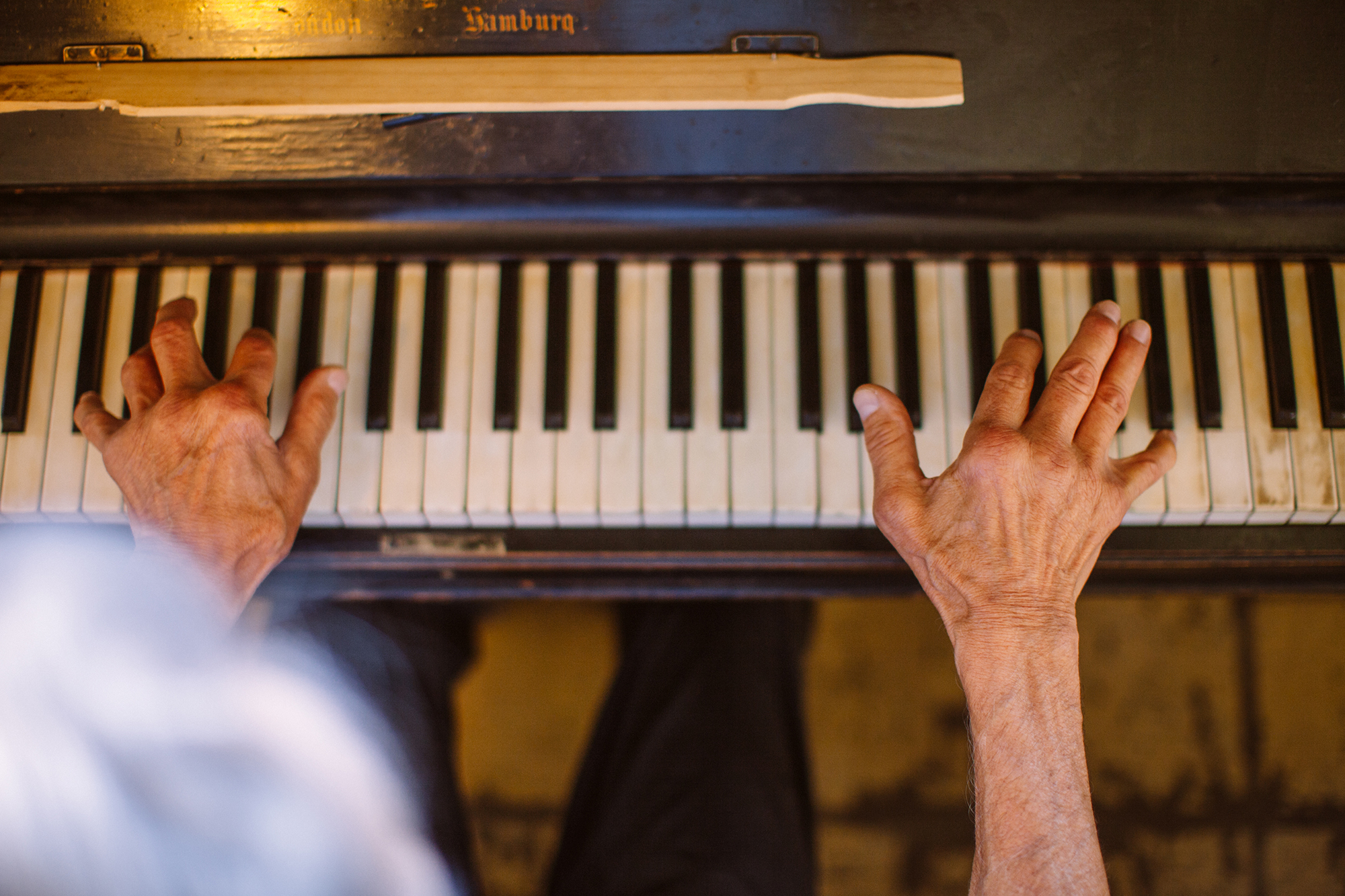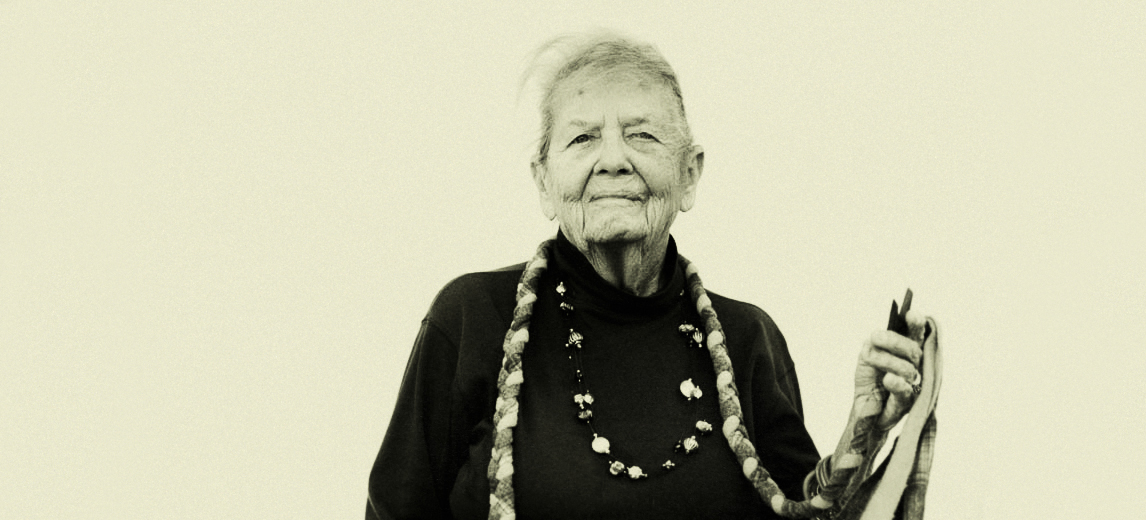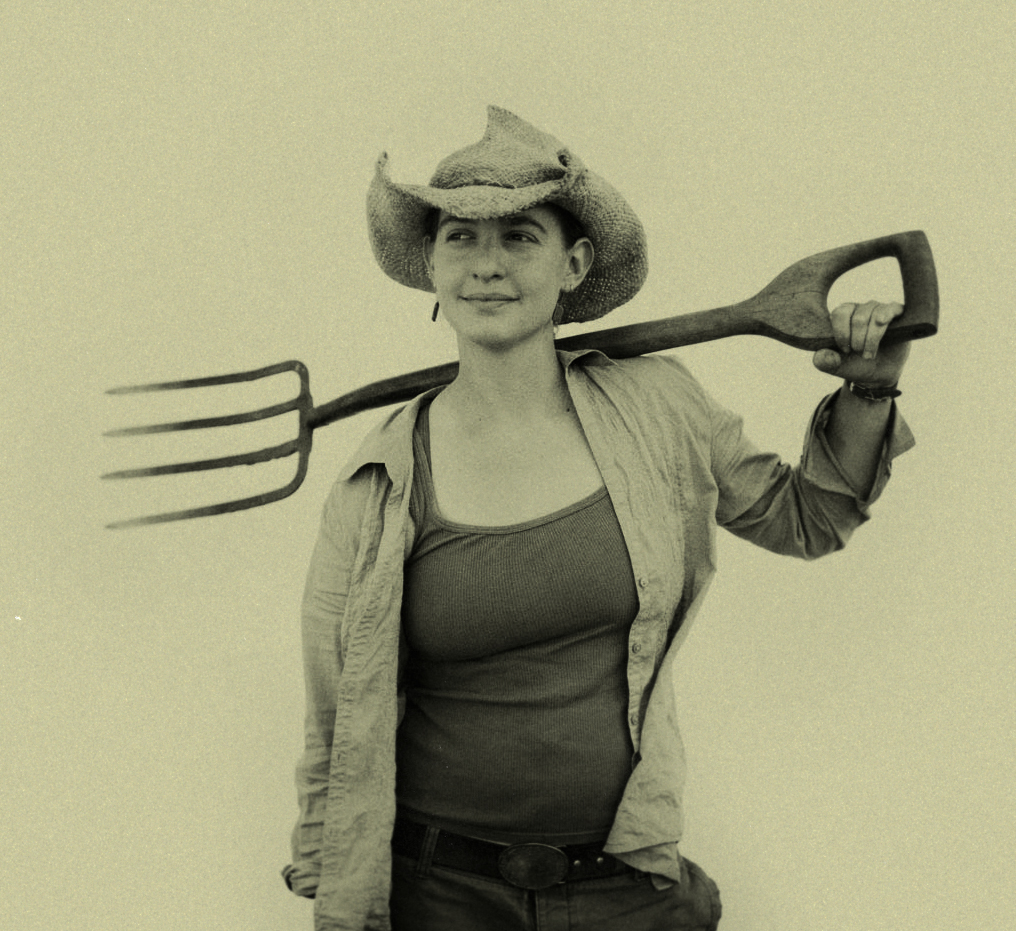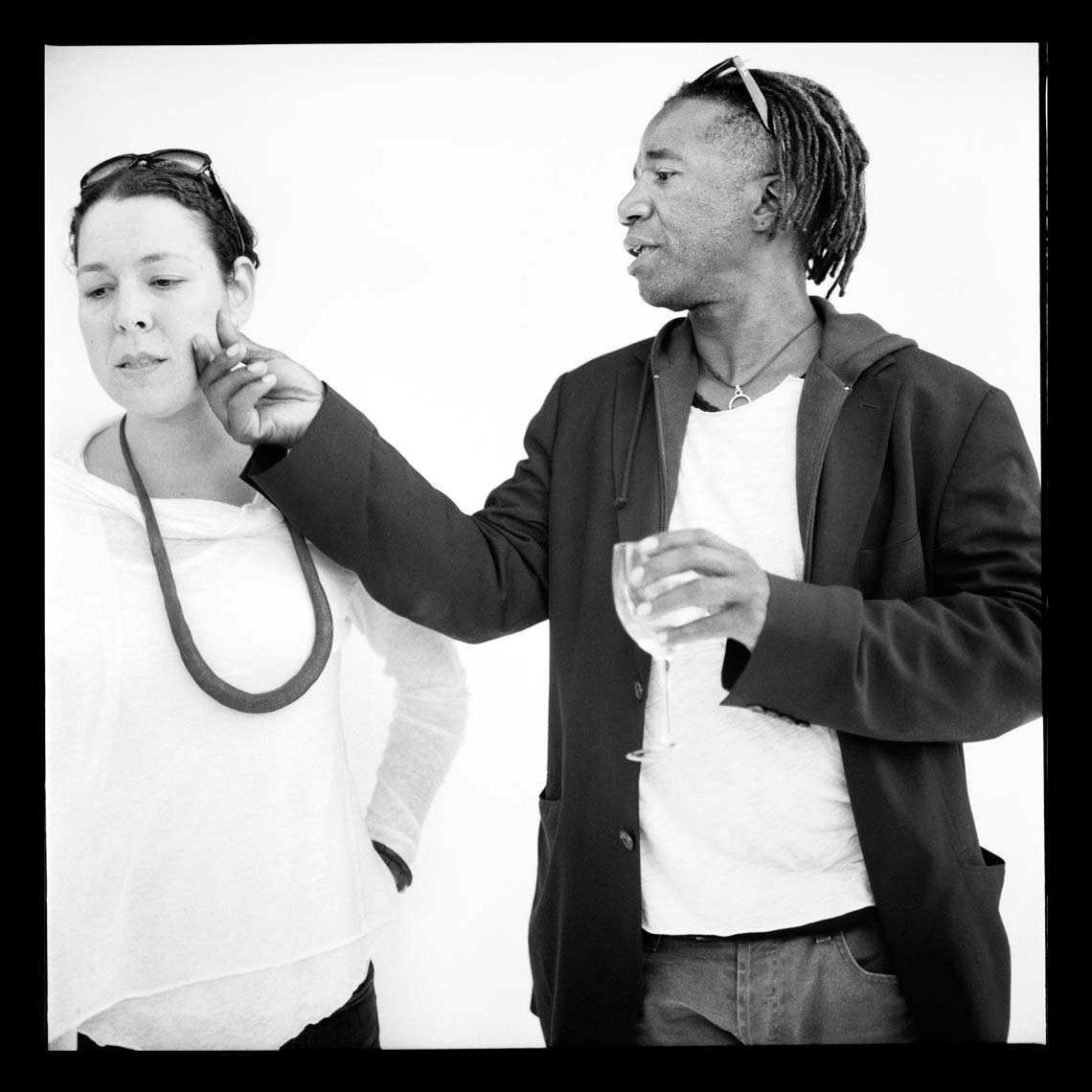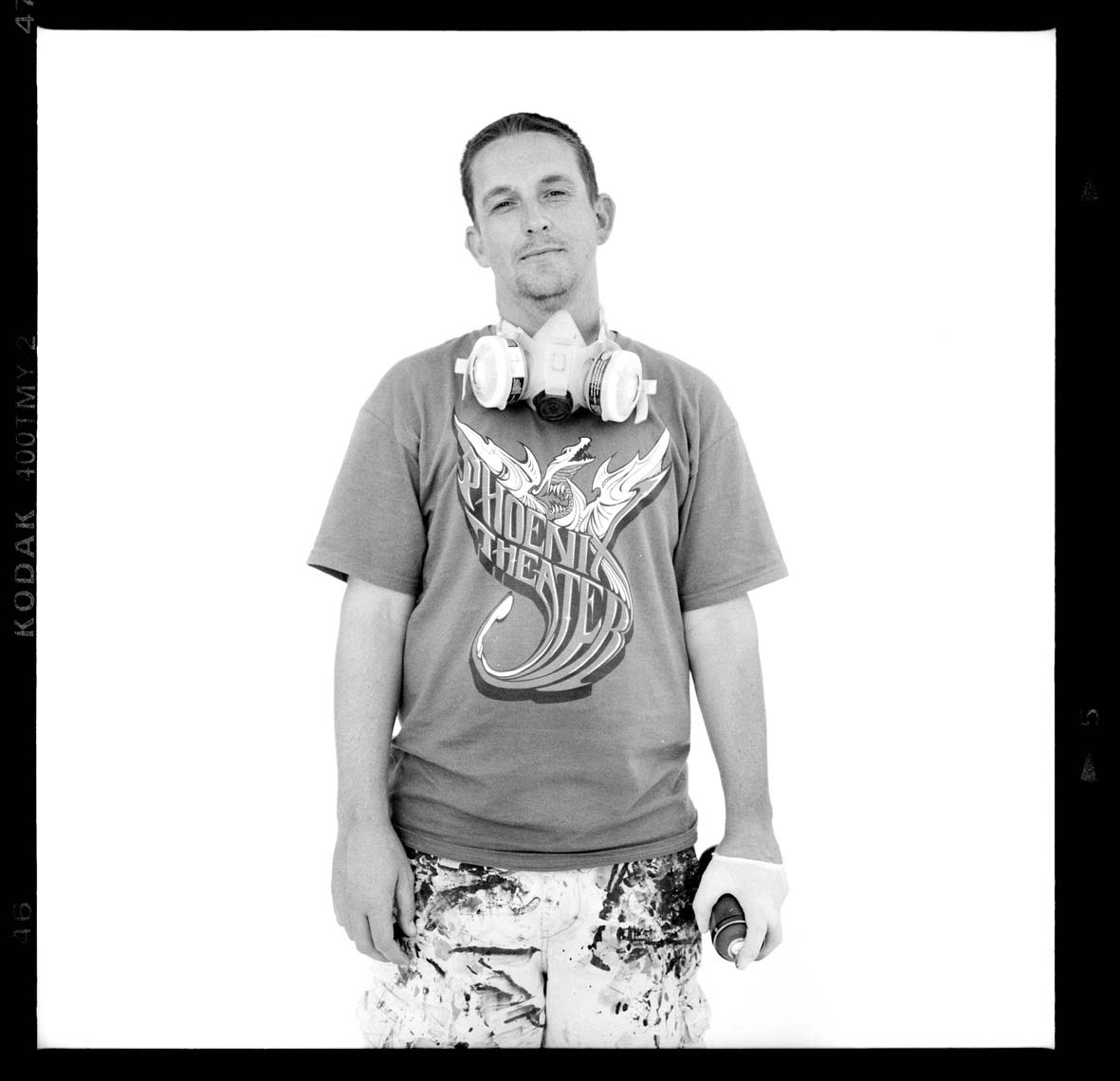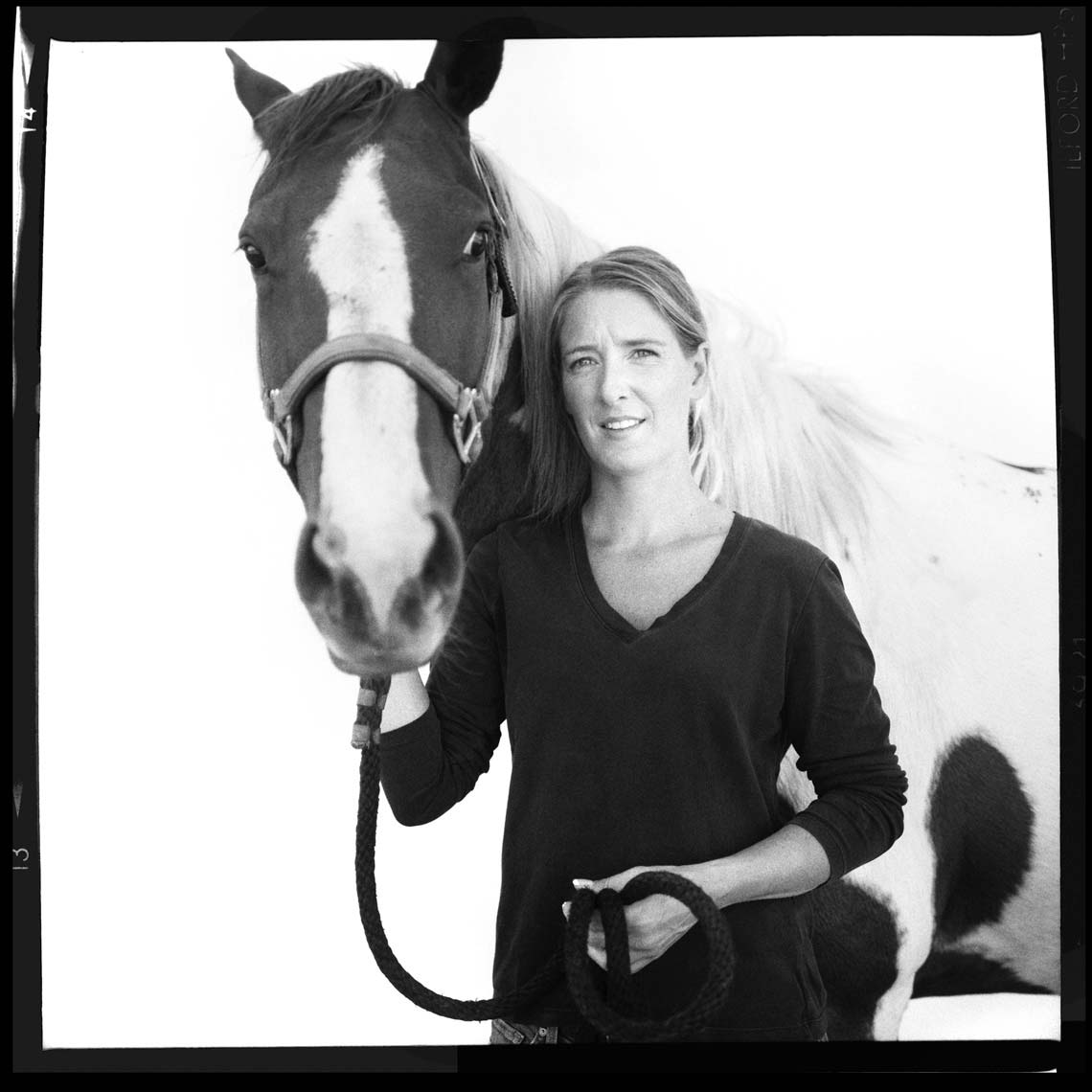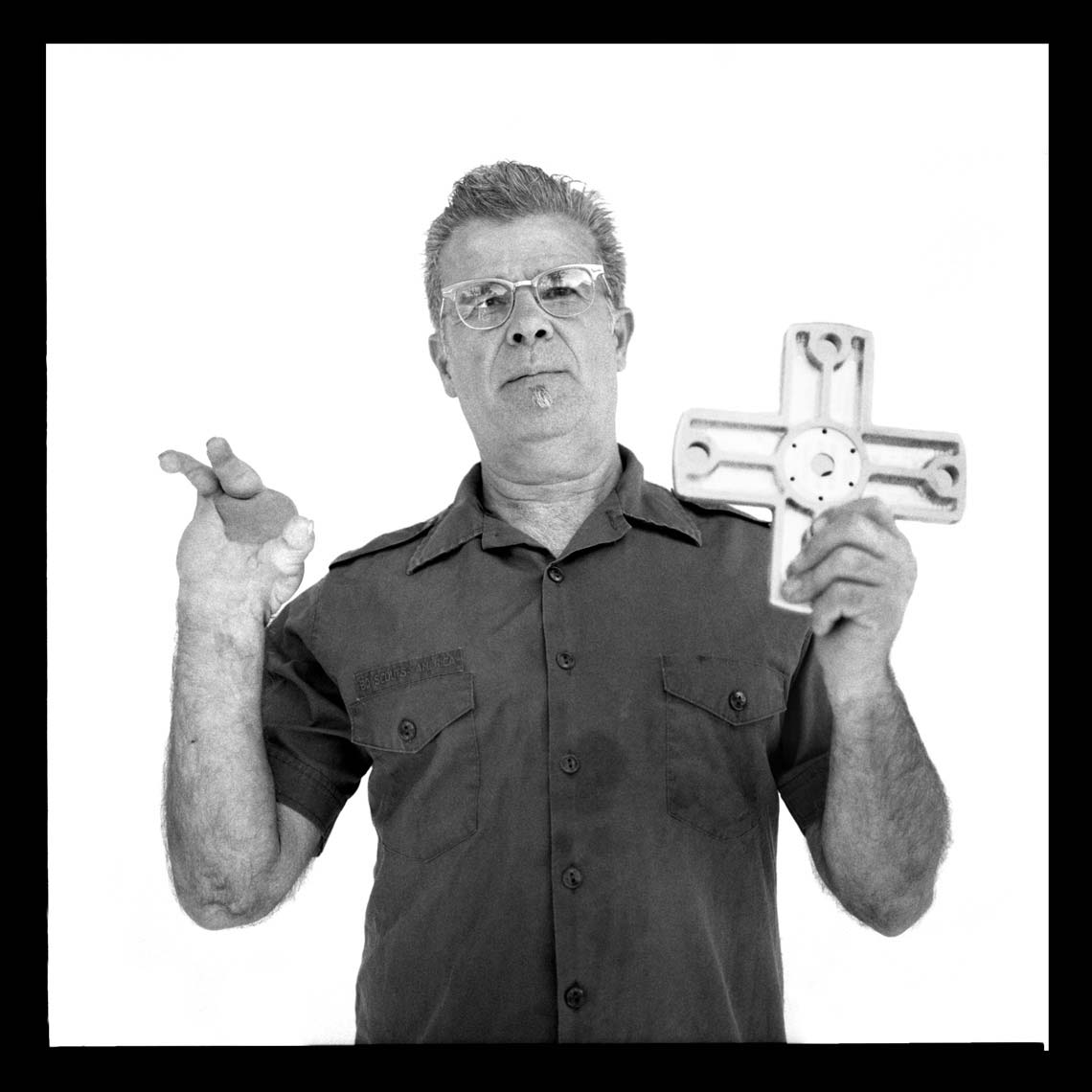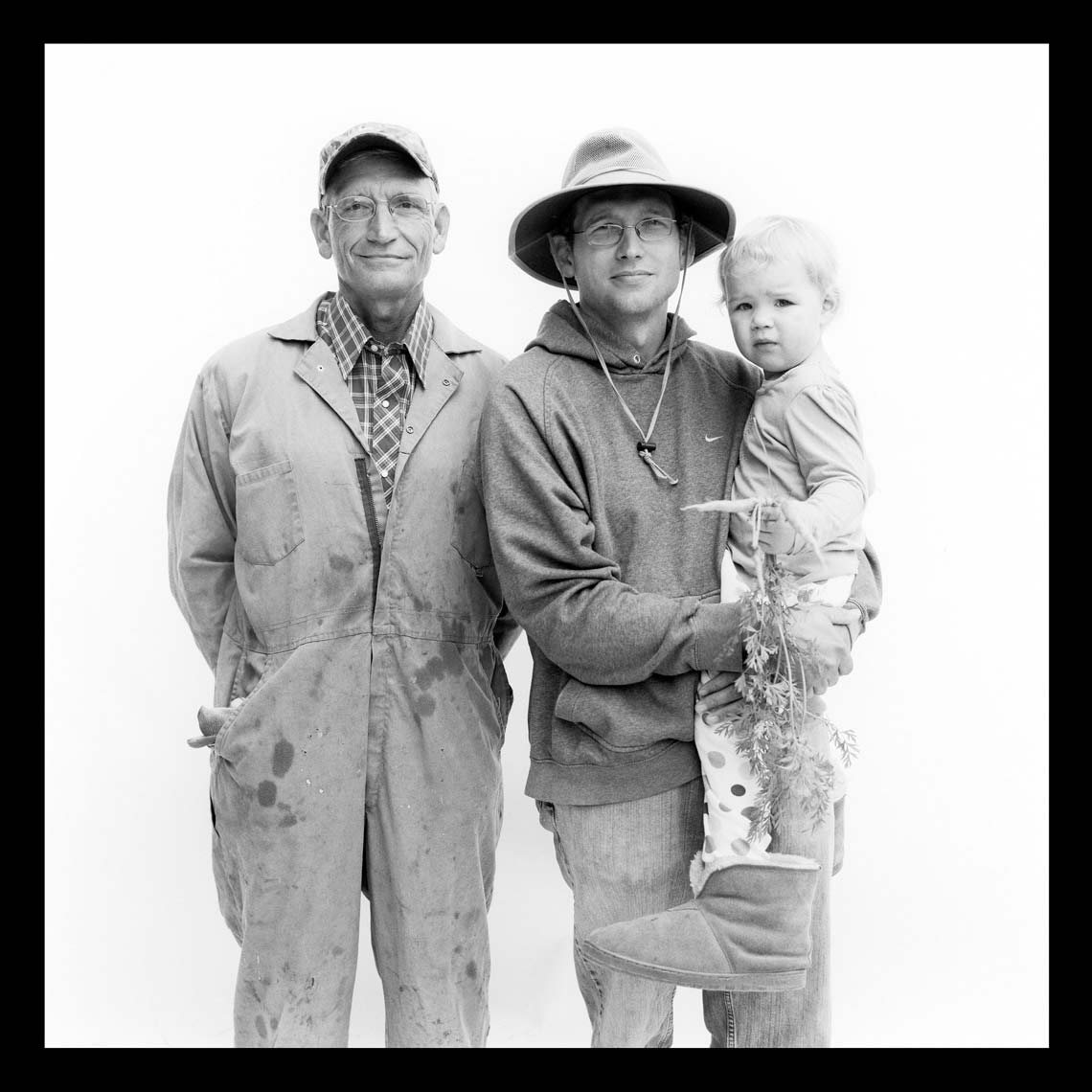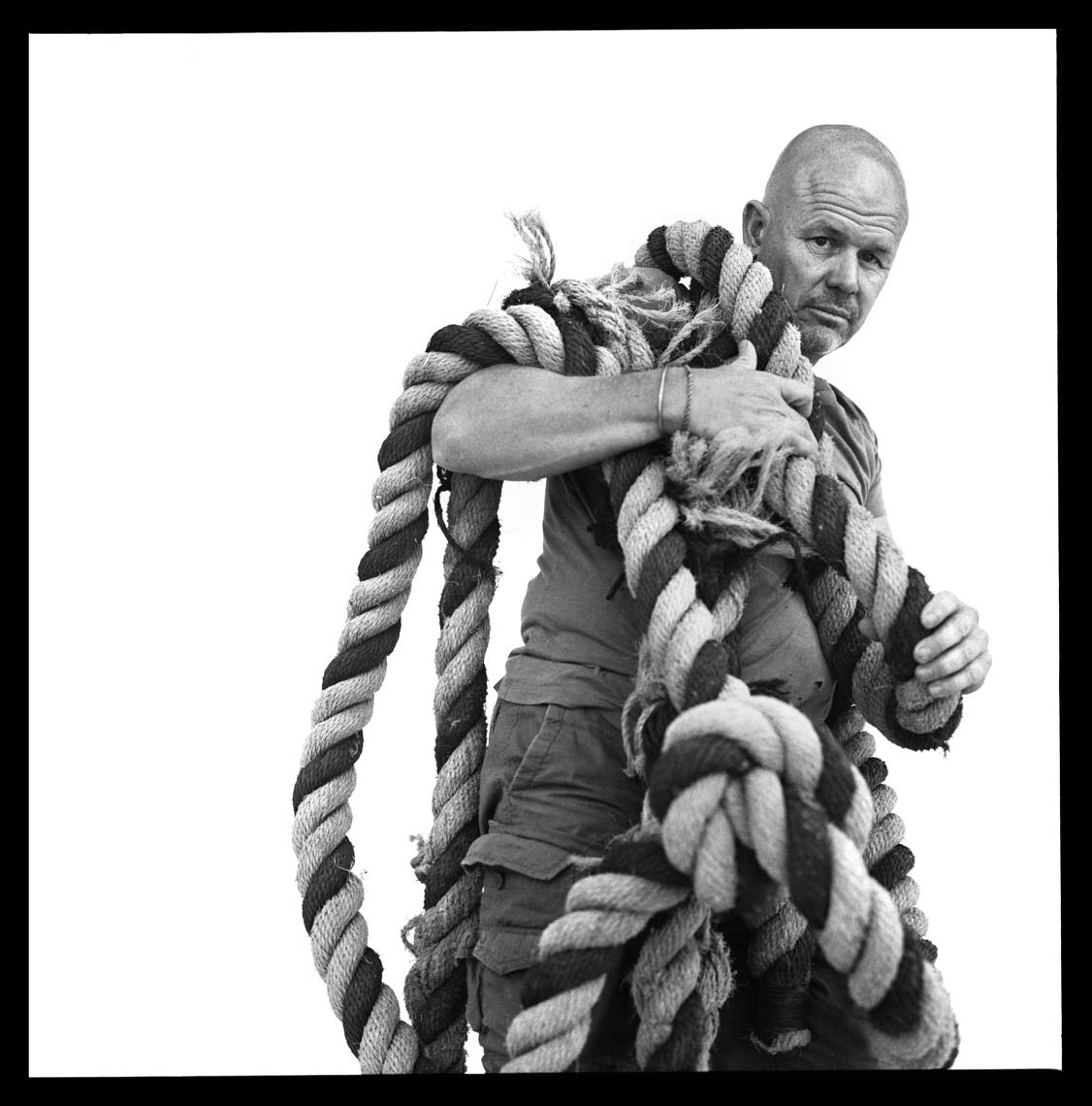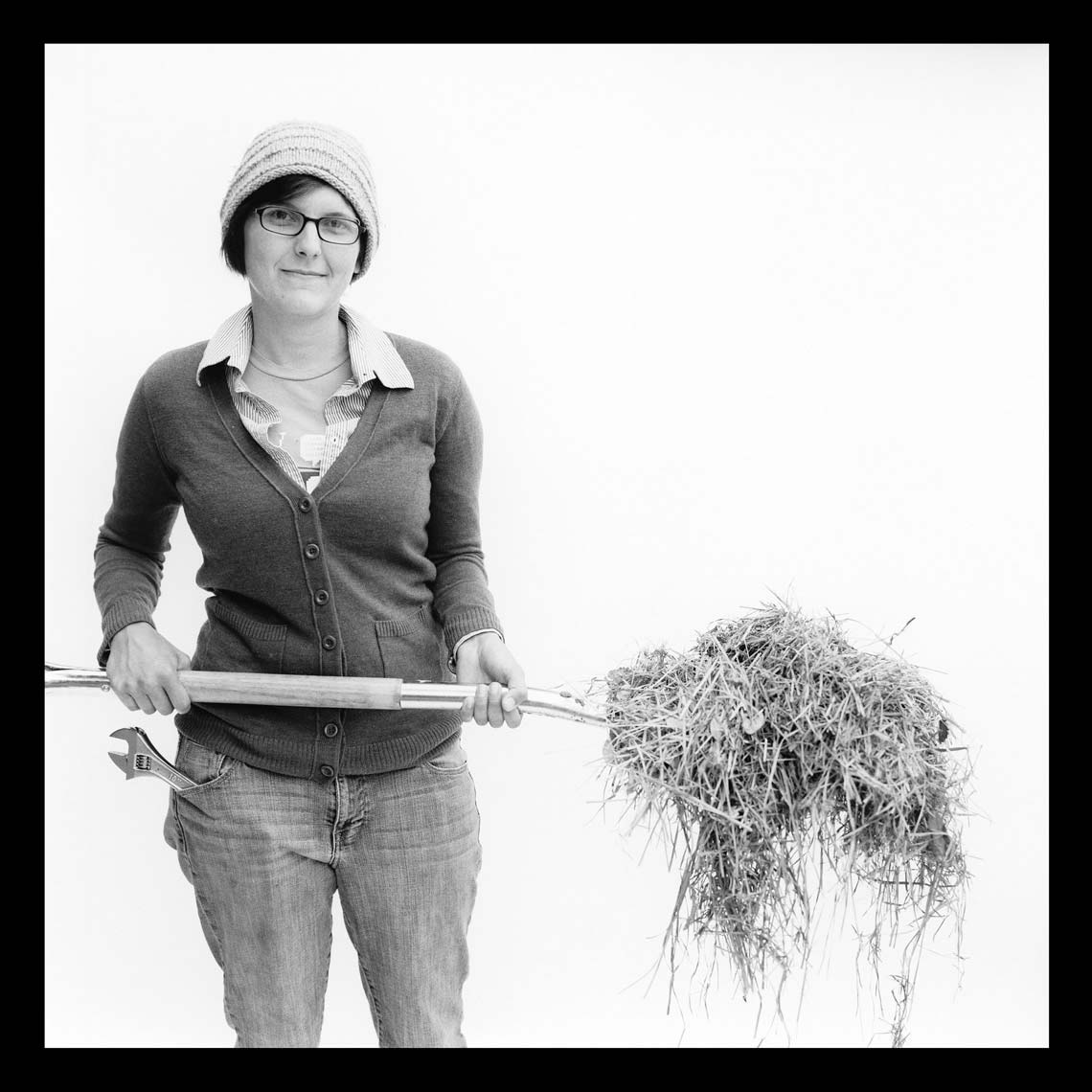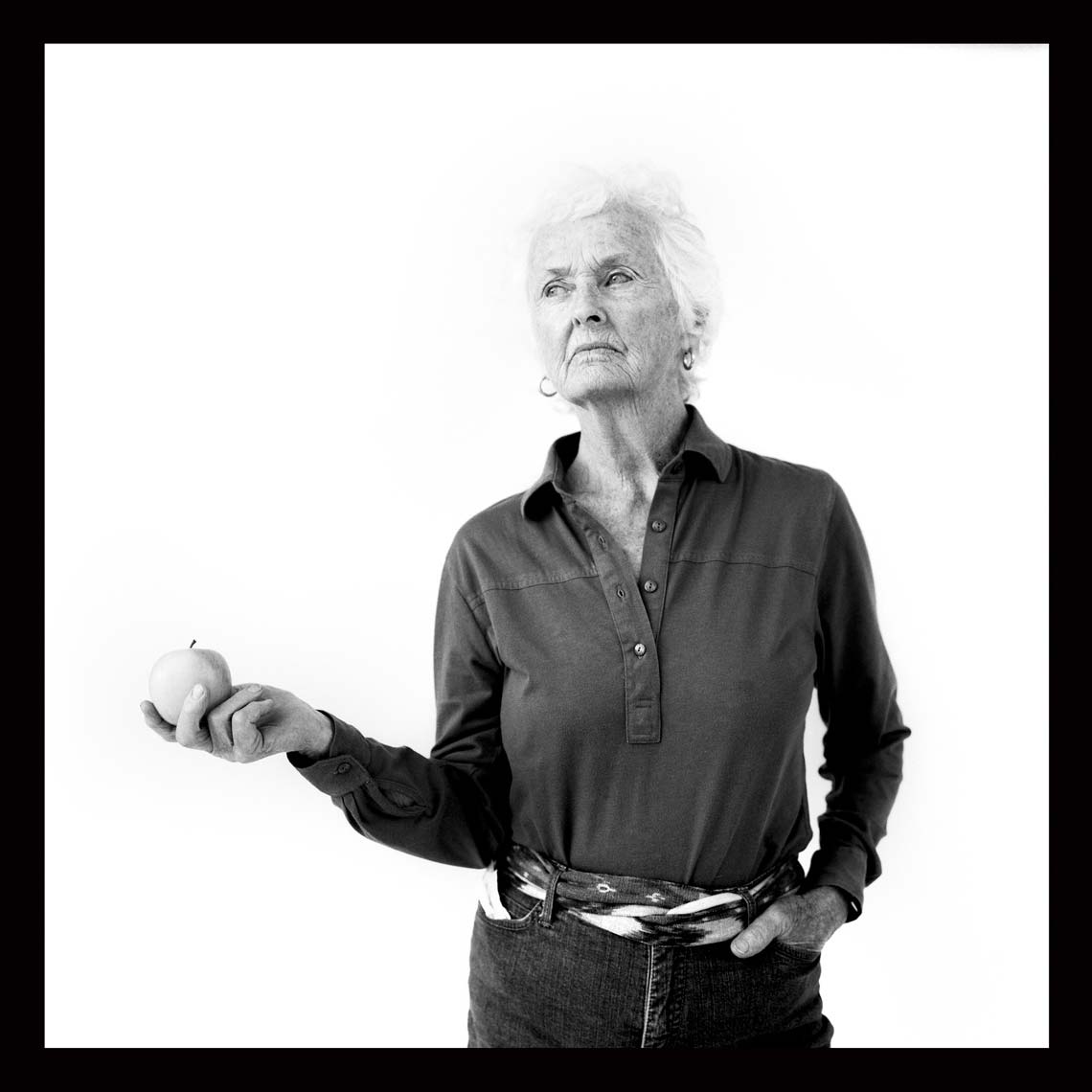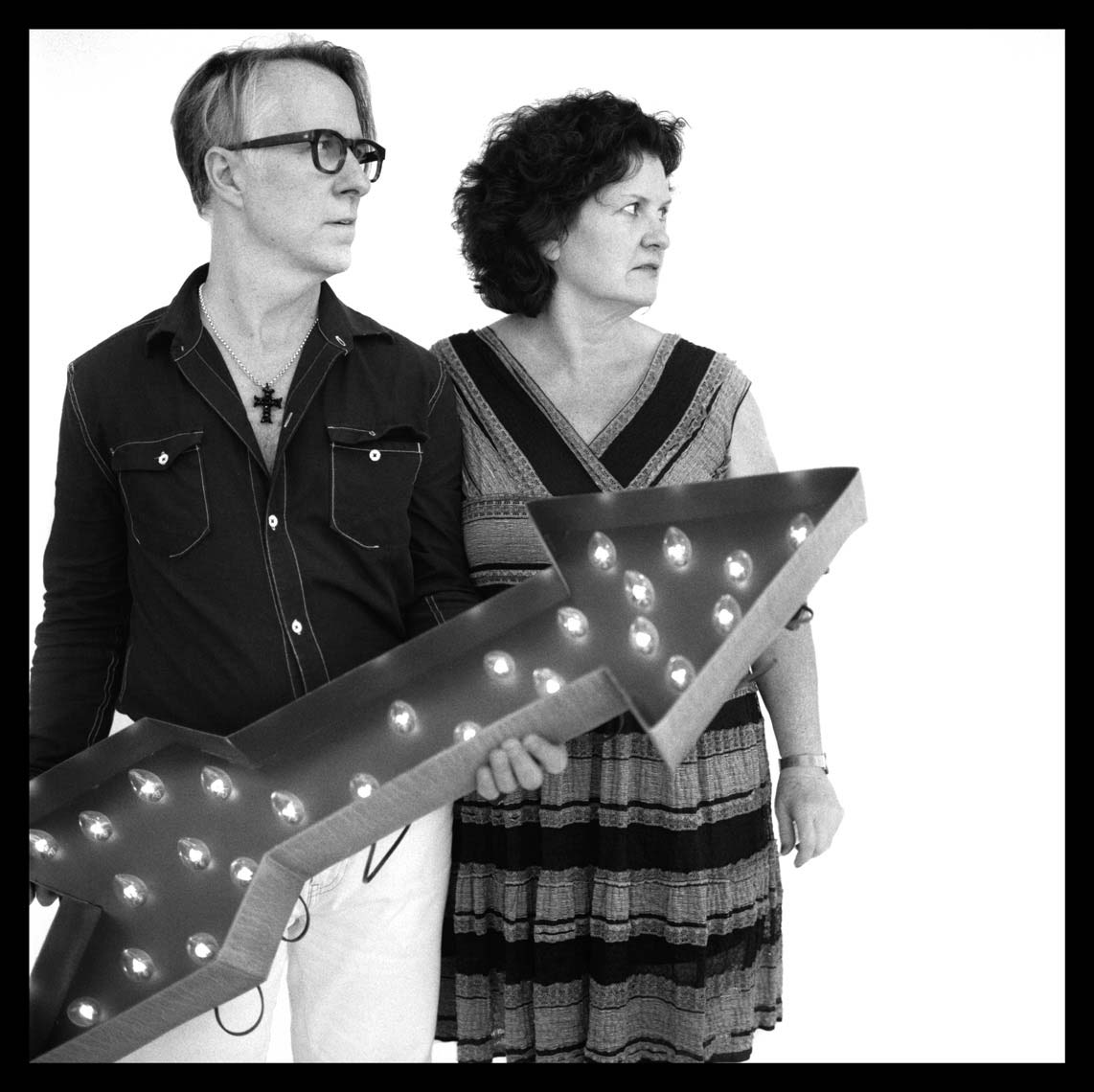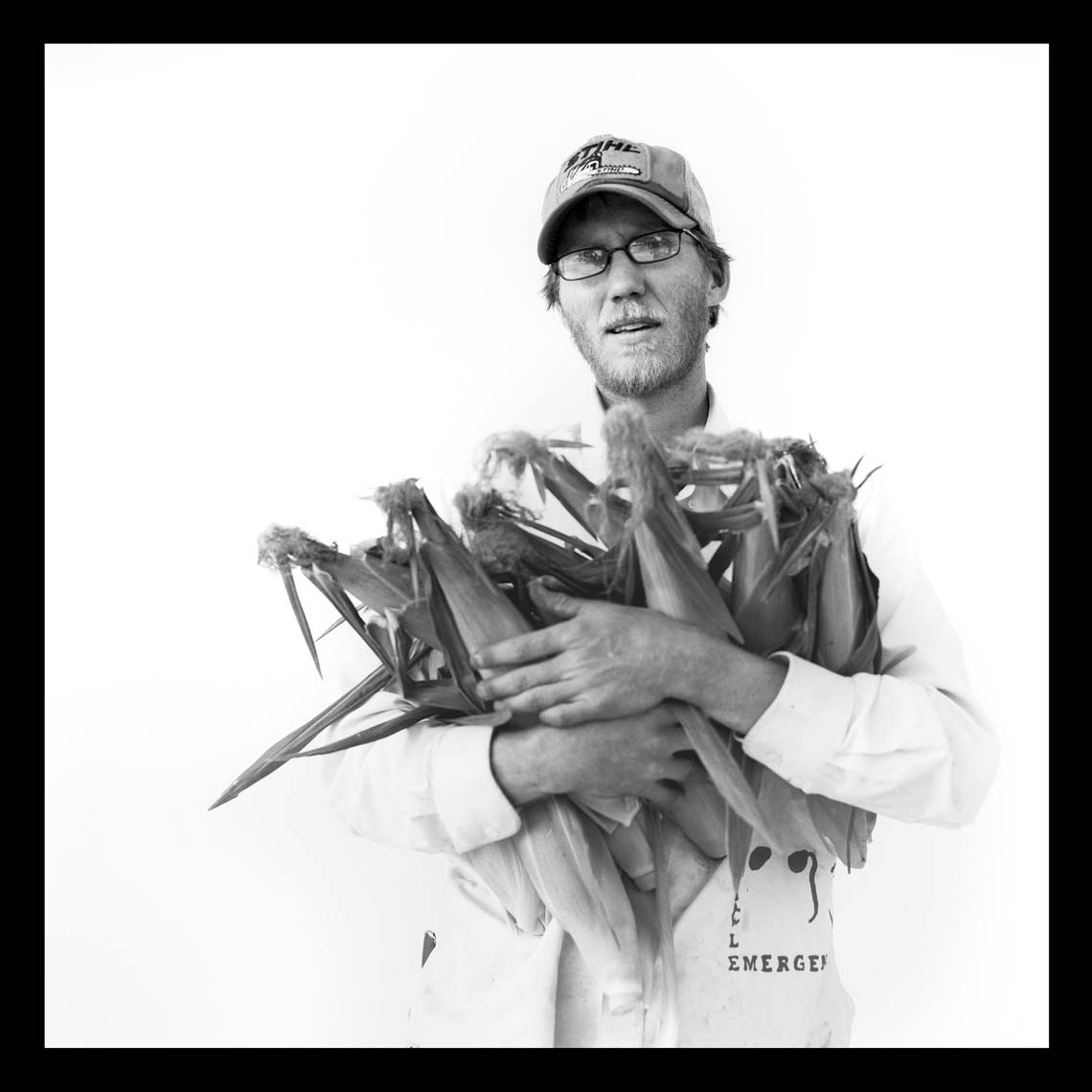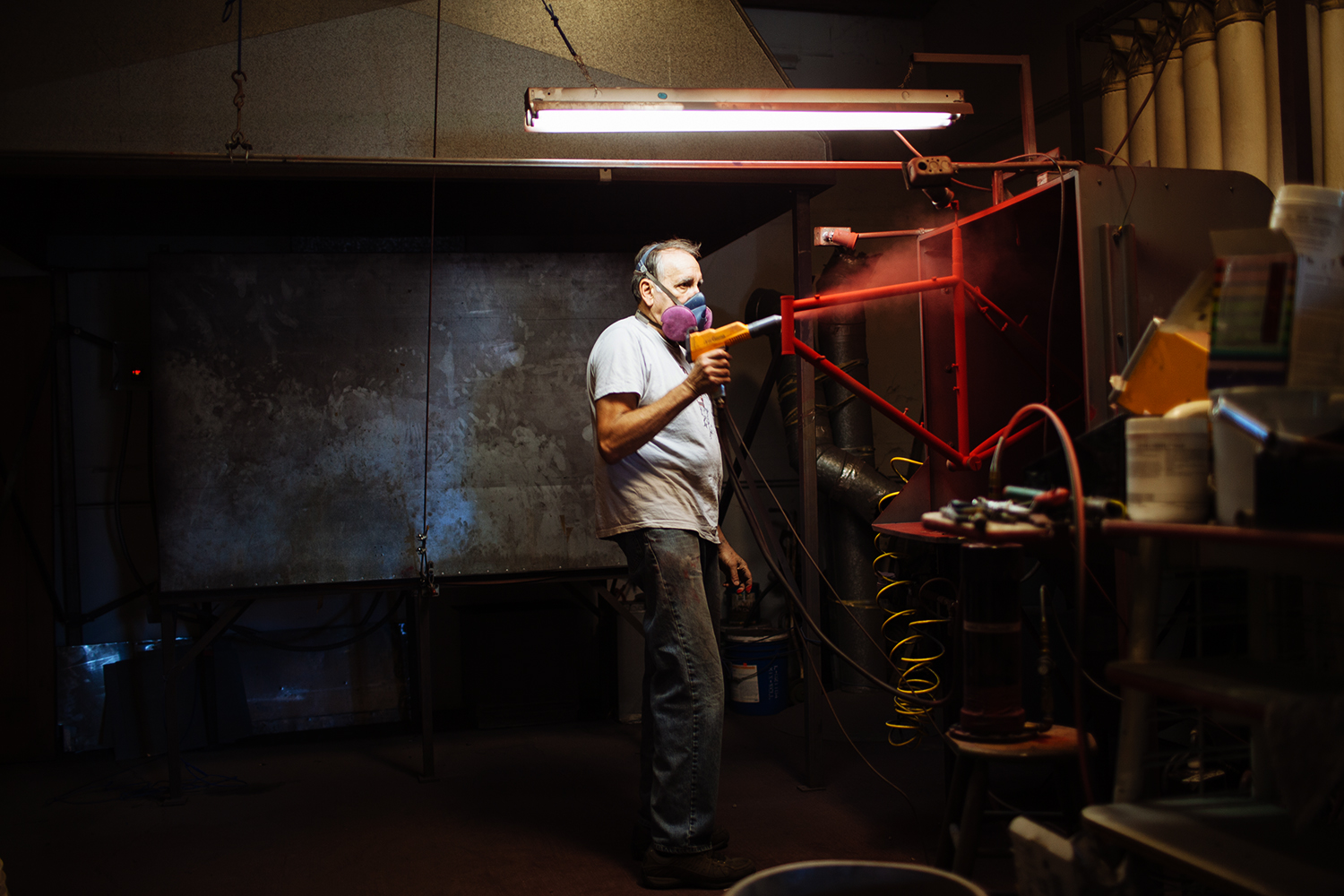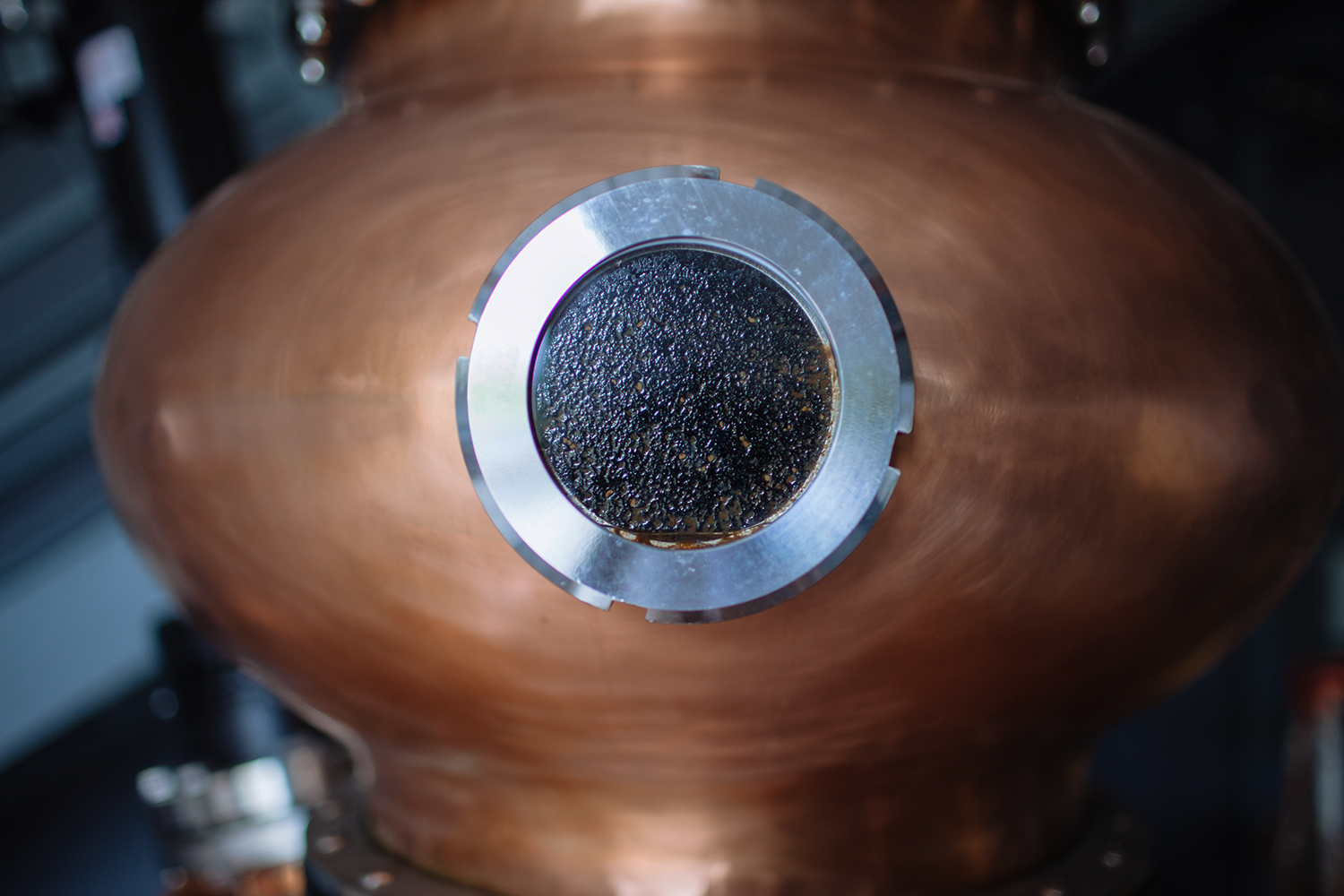Aldo The Piano Man
When Aldo Garibaldi moved to Petaluma 11 years ago, he quickly traded in his piano hiatus for daily finger exercises needed in order to stay in shape for his new gigs around town.
We caught him in between songs at Petaluma Coffee and Tea on Second Street where he plays 2-3 mornings a week, part of the eclectic cast of characters that create a particularly unique tableau. Aldo shared a bit of his story along with a few ultra special nuggets of wisdom mined from a long life full of experience with music at it’s core.

I consider myself a rebel
and it comes out at the piano."
A classically trained pianist that started music lessons at 10 years old, Aldo has almost always been a working musician. As a teen, he played in a band getting paid a modest $8 a night for gigs. He played in the Catskills, New York and New Jersey piano bars, and his claim to fame, as he says, was playing the Waldorf-Astoria (for free for the Italian Society.)
In another chapter of his life he worked at Gimbel’s Department Store in the piano section. He laughed as he confessed he was the only salesman on the floor that could actually play the piano. When you bought a piano at Gimbel’s, you would receive a package of piano lessons, which Aldo taught, and over the course of a few years, gained a critical mass of students.

He speaks passionately about teaching music.
“I learned so much about life from the people I taught,” Aldo told us, visibly moved by the experience. “I connected to people through music.” and from what we can tell, he still does. It is clear that the lives of his students deeply shaped his own and the music has so often been the connective tissue of his most meaningful human relationships.
He shared a favorite quote of Lily Tomlin’s with us, “We are all together, alone.” which captures a sad existential truth about life along with the beauty of human connection and seems central to his philosophy about life.
Petaluma Coffee and Tea has become a creative safe space for Aldo where he relinquishes all sheet music and plays from the heart.
He played one last piece for us before we said goodbye, a beautiful rendition of Duke Ellington’s jazz standard, Satin Doll. We could tell by how he played that this particular song had been a soundtrack to his life more than once.
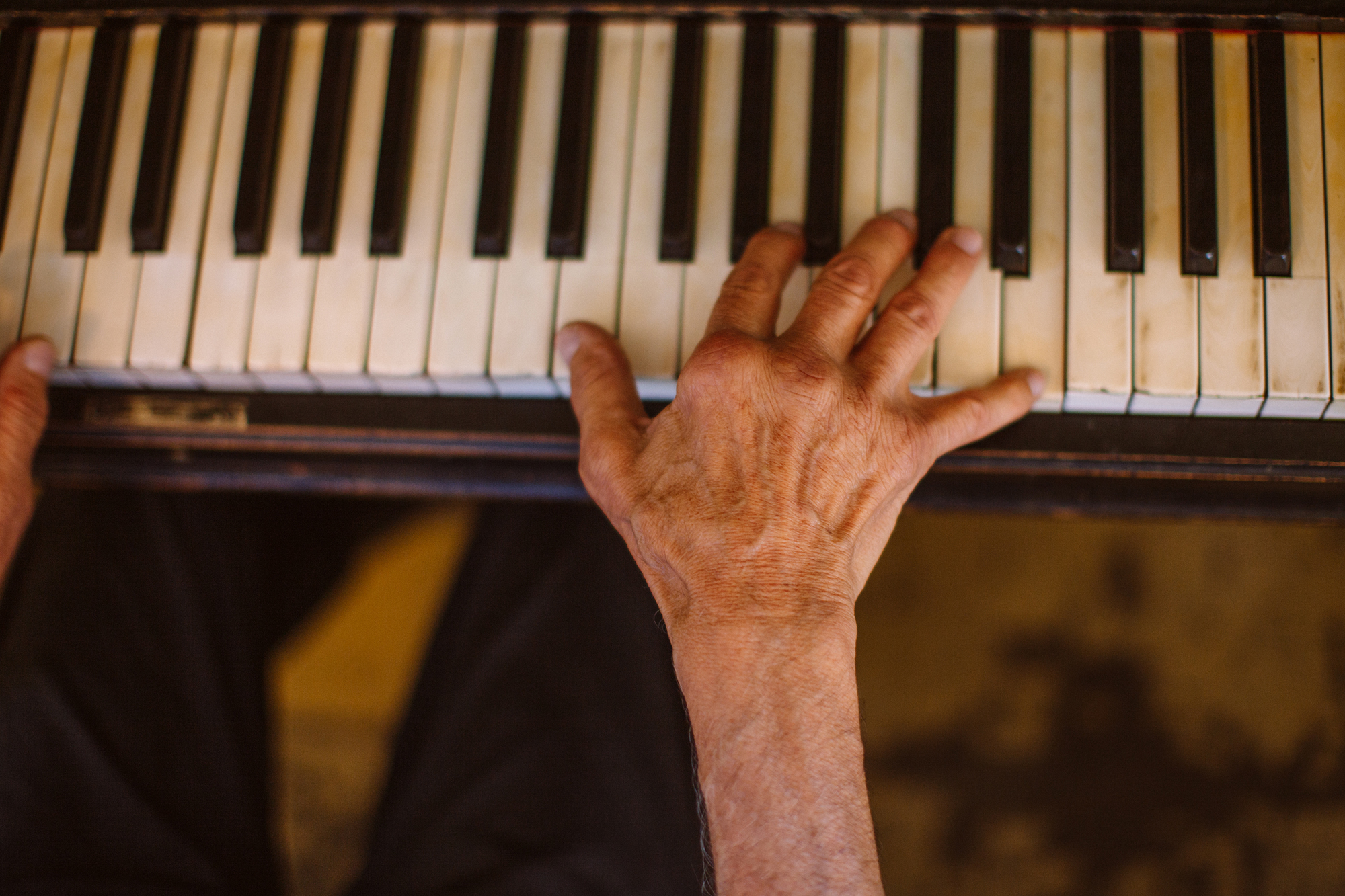
He did, and so did we.
From Thistle to Green
From Thistle To Green


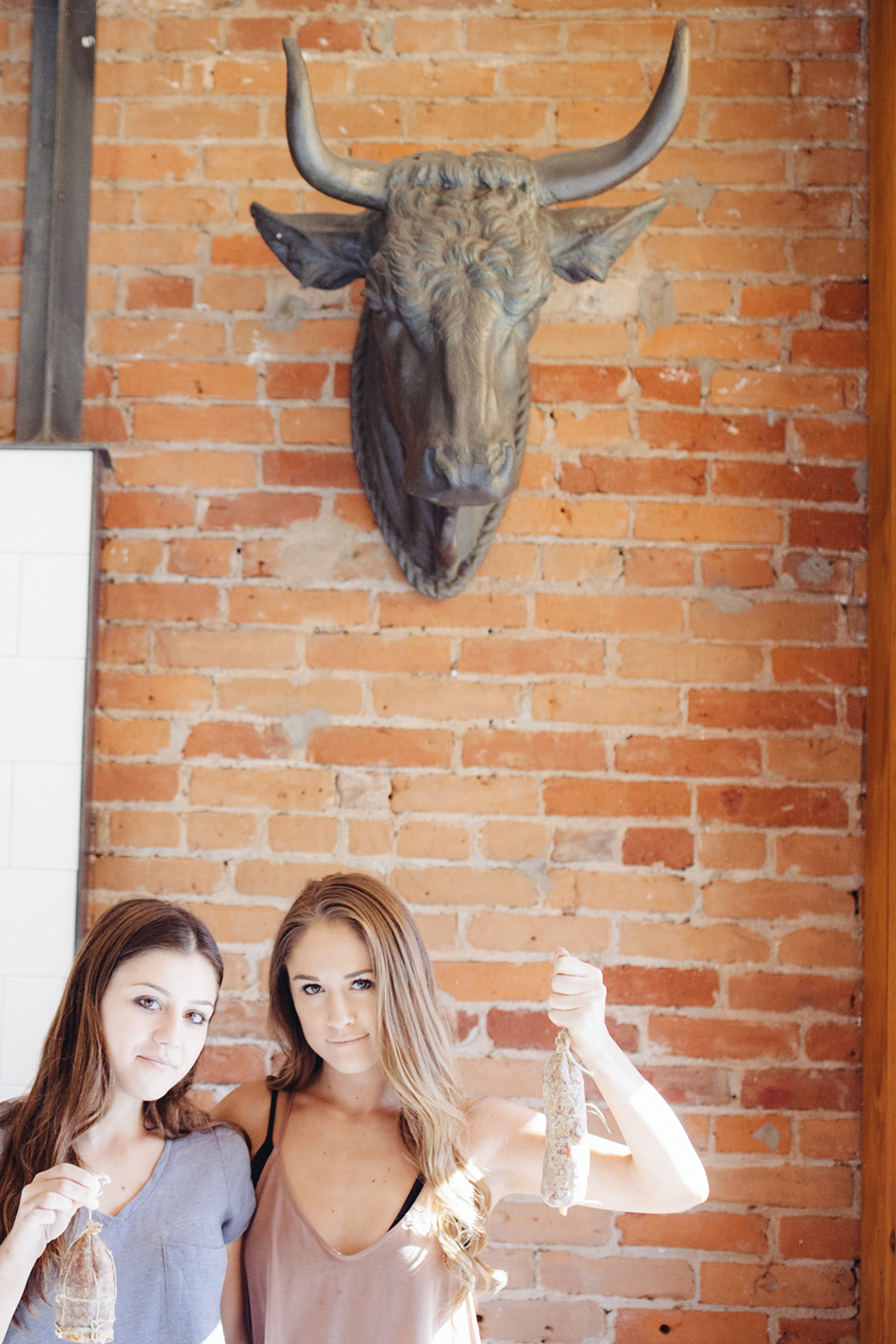
Step One: secure transportation for said errand running. We tapped our friendly neighbors at Yuba Bicycles.
Field: Hey Yuba. Can we borrow bikes to tool around downtown prepping for our pre-Green Music Center errands? We promise not to crash.
Yuba Bikes guys: No problem!
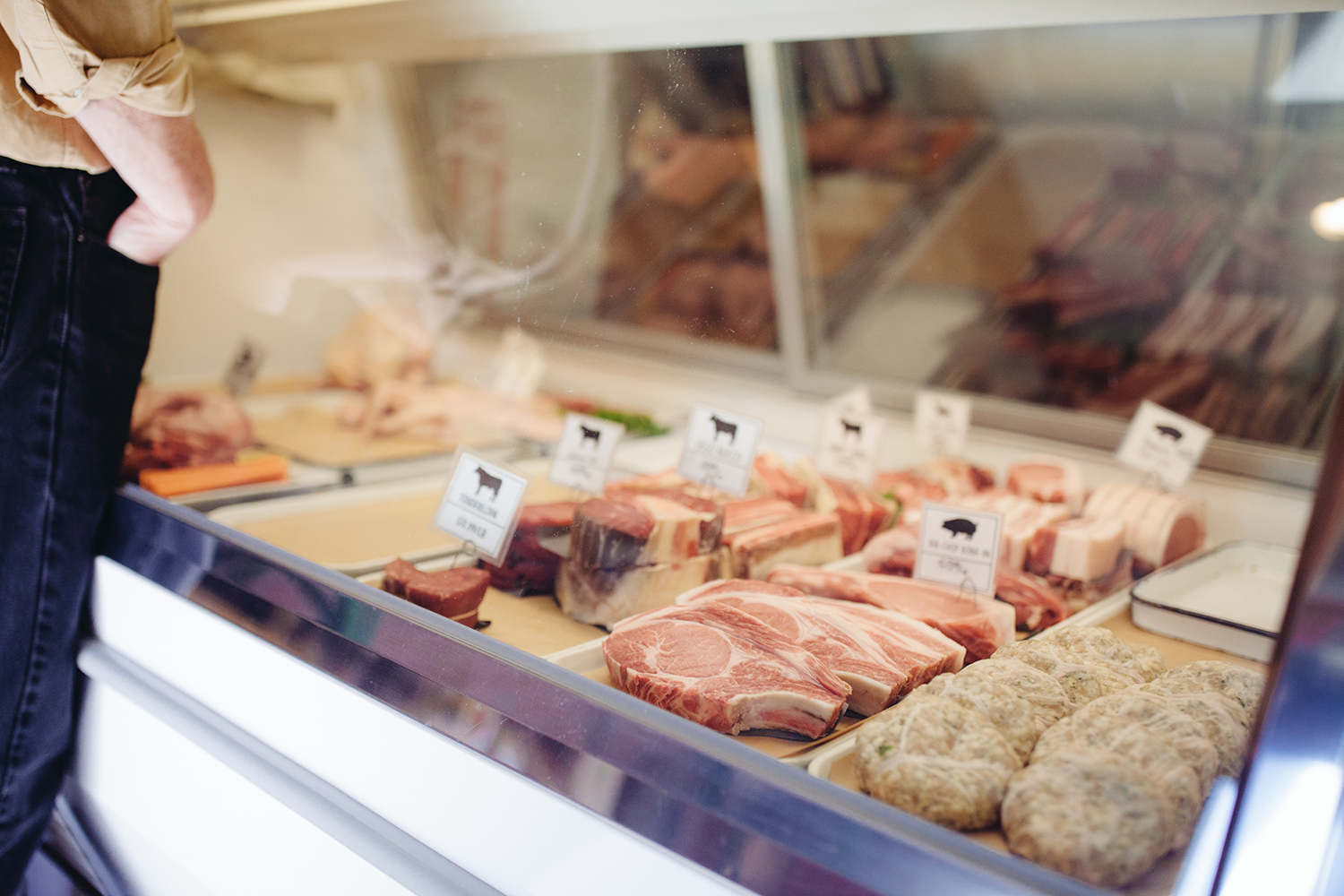
What picnic would be complete without meat and cheese? Really not a one. So, we proceeded directly to Thistle Meats where we knew we could successfully procure just the right array of savory local pig and cow cured deliciousness. We love Thistle for its dedication to locally sourced meats and support of small farms in Sonoma County. And, because everything in that place looks beautiful and tastes amazing. Oh, and don’t forget the rabbit terrine, which we did not. We were also able to throw in a round of Cowgirl Creamery Red Hawk to provide a creamy foil to the salty meats. So far so good.
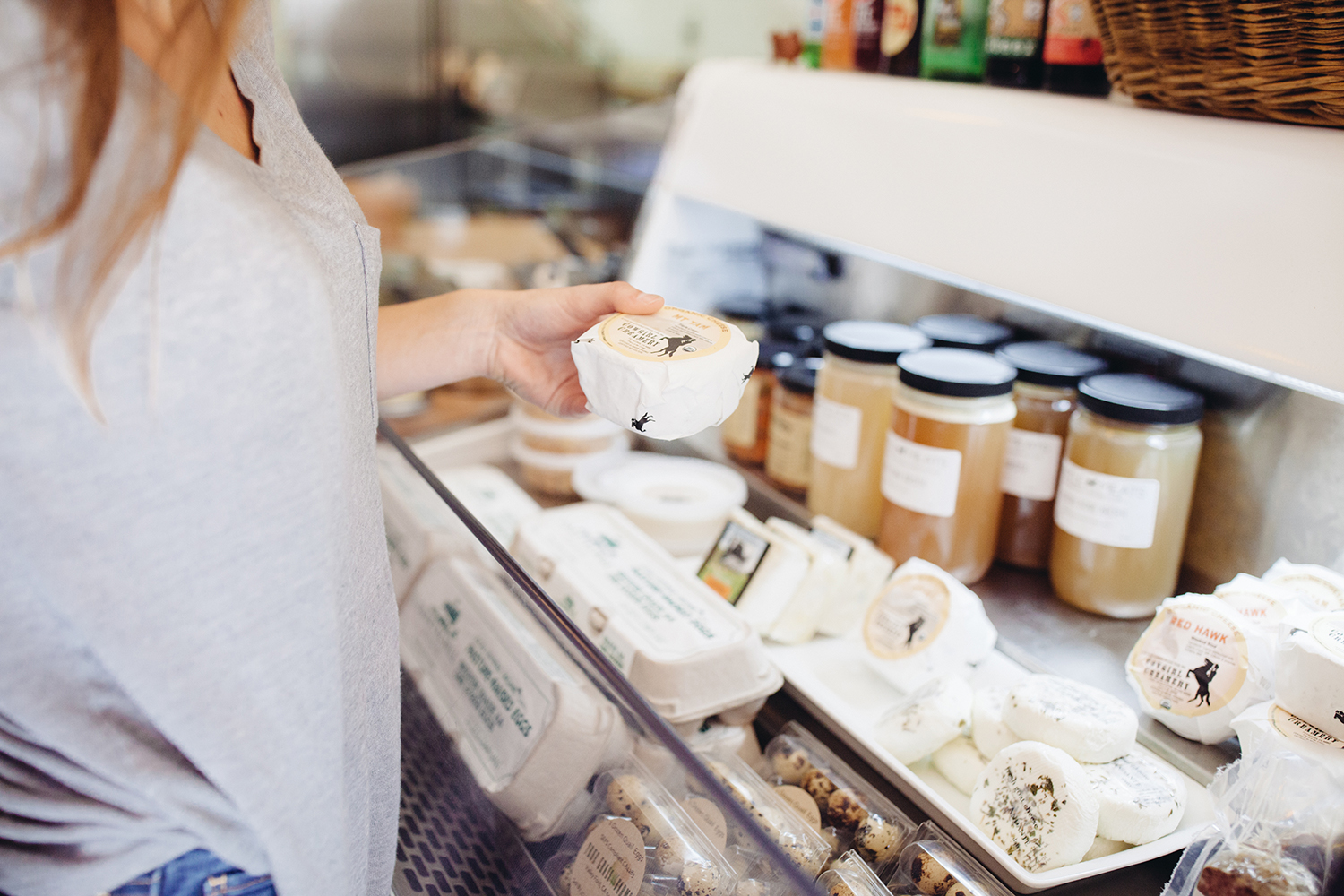
We sadly said goodbye to the bikes and returned them, unscathed, to Yuba. Then it was time to embark on our journey north in a mode of transportation with a little more horsepower. Beverages were top of mind for our next stop: Oliver’s Market in Cotati. The wine section there is well stocked with local vintages and the staff is incredibly helpful. We chose a Kunde Sauvignon Blanc and an Unti Vineyards Rose to complement our spread of meat, cheese and bread.

And a little fruit never hurt anyone. If you haven’t visited an Oliver’s Market, its time. Between the produce, meat department, wine and spirits section and ready to eat food bar…you can’t really find an improved situation for grocery shopping and eating. Locally owned, the vibe of Sonoma County is alive and well within the walls of each of its 3 locations.

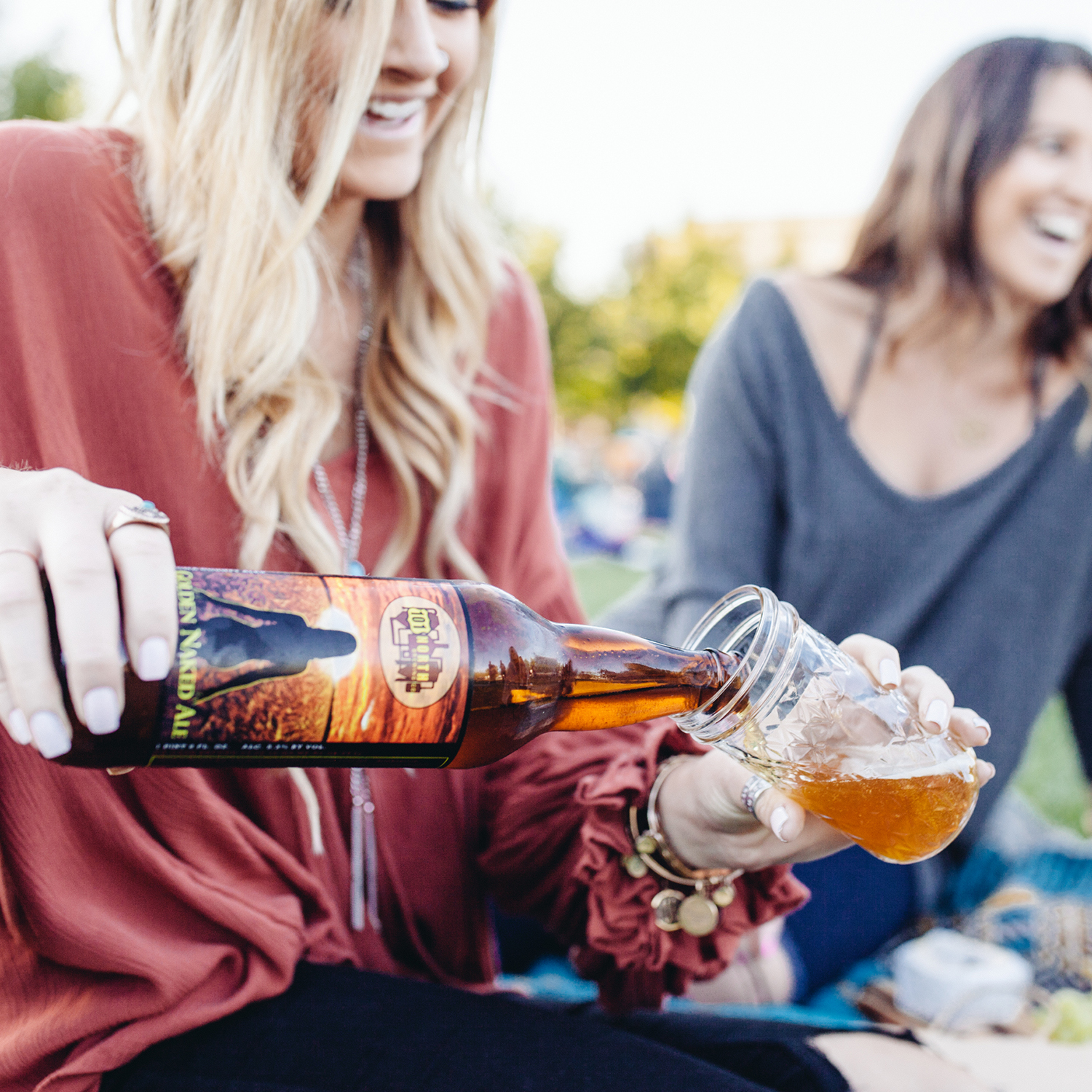
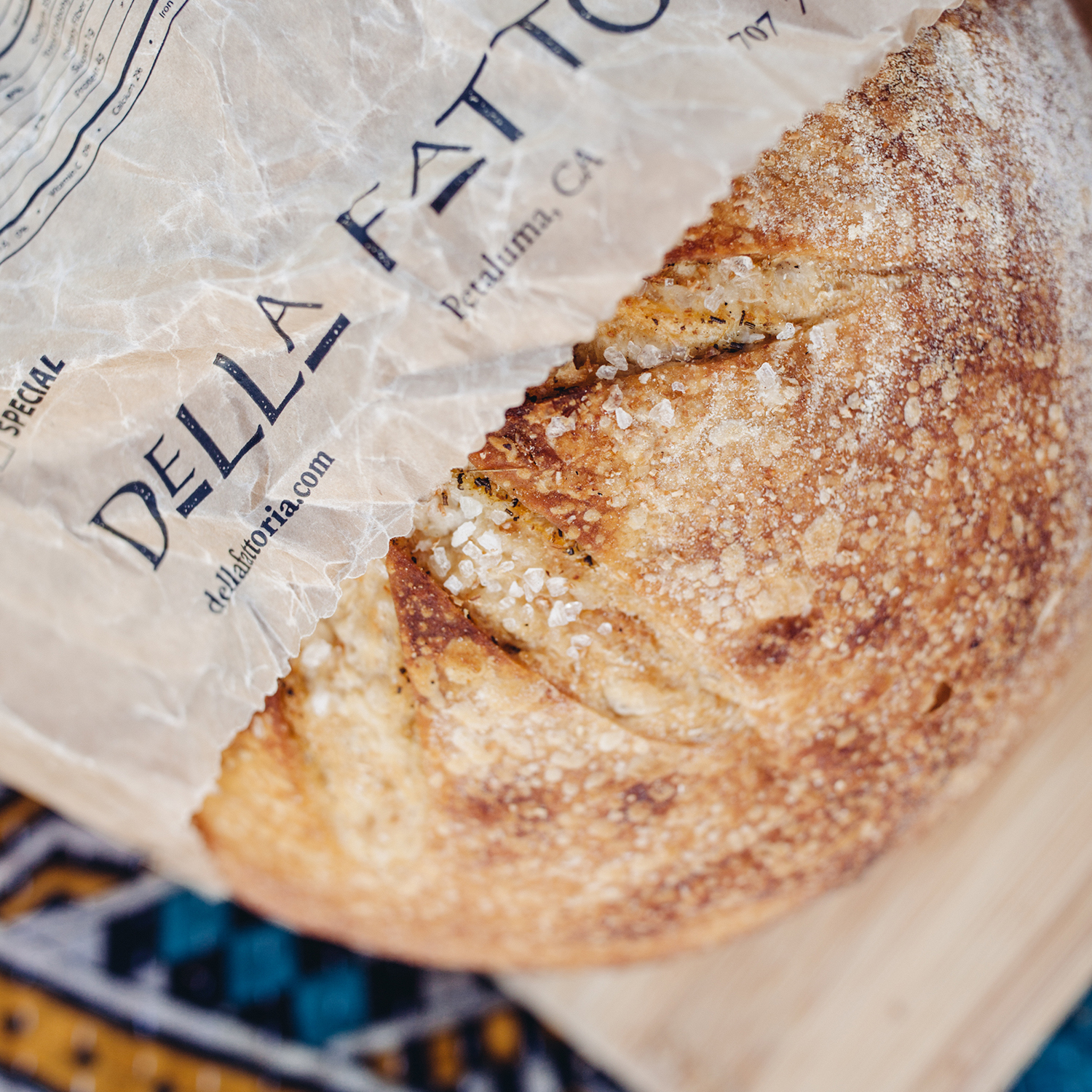

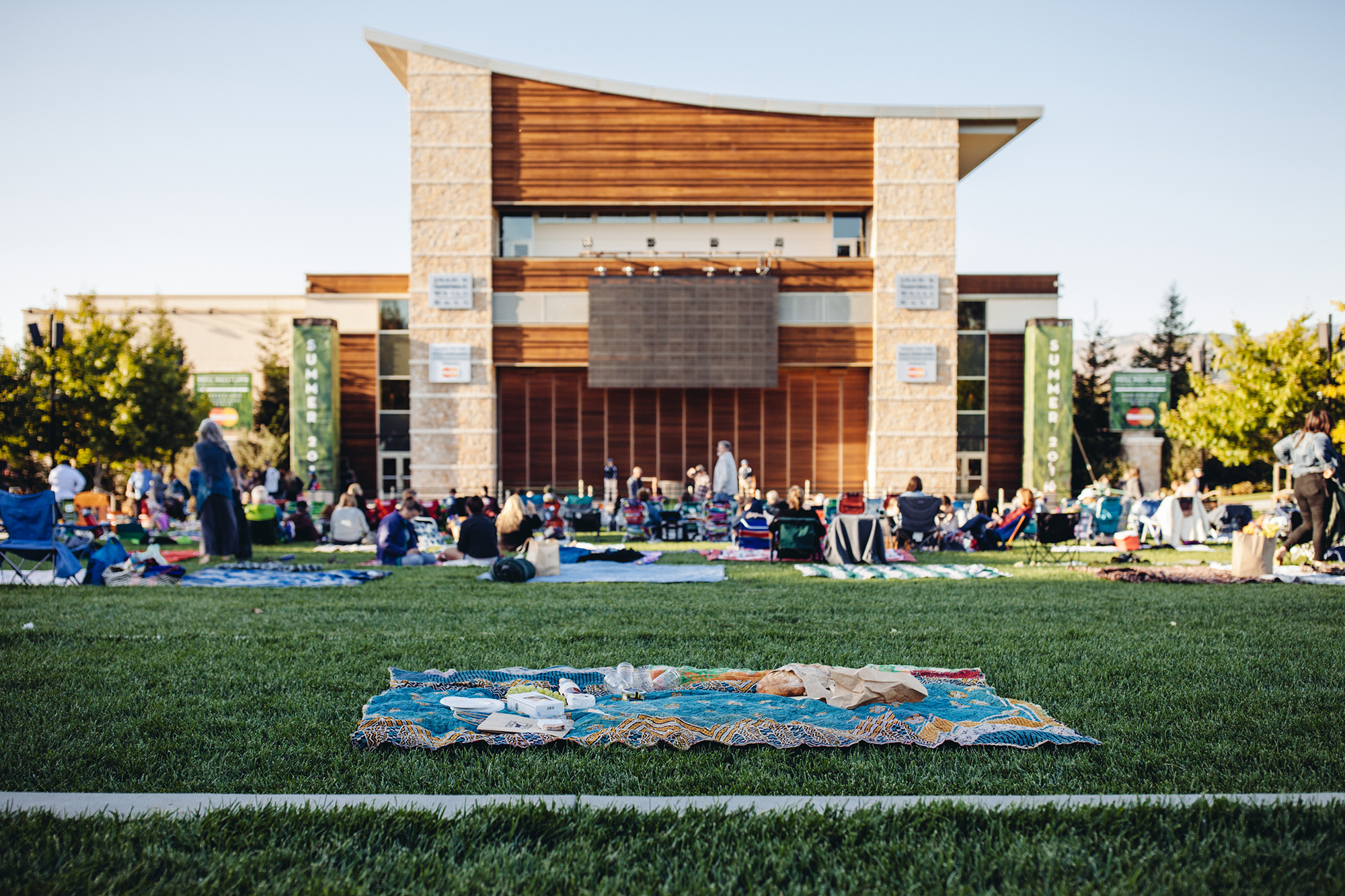
Then we arrive at the lawn at the Green Music Center. Blanket laid, food arrayed, wine poured, and the party can start. And its a really good party — surrounded by other lawn revelers with picnic situations of their own. Everyone is friendly as the crowd grows and the lawn fills in with concert goers awaiting the music that is getting closer and closer to starting.
It’s a beautiful summer Sonoma County evening…time to put the wine and cheese down and stand up and enjoy the show, we did and look forward to next summer season when we will most certainly do this all again.
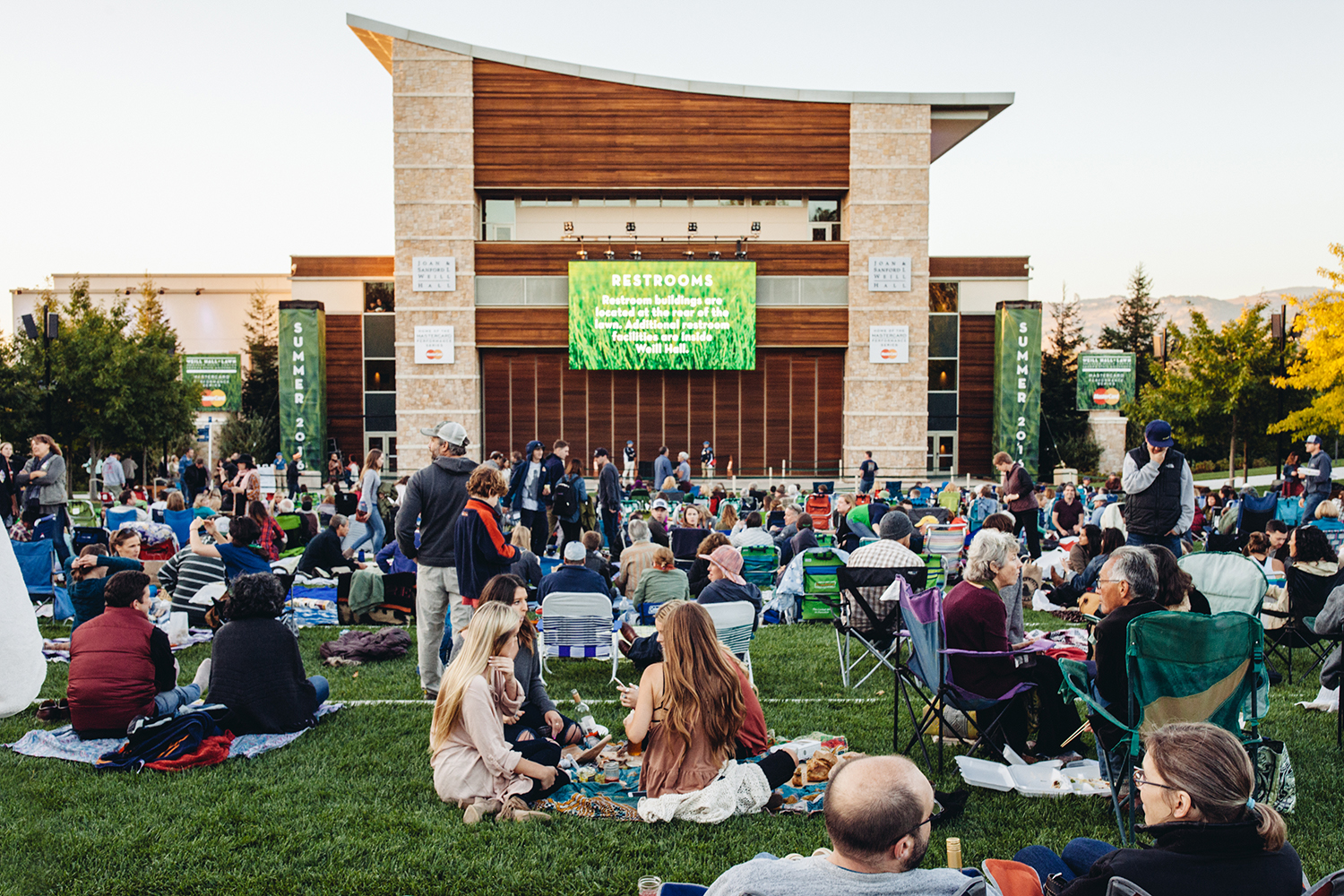





Big Sound
By Brian Berusch
When you think of the quintessential sounds of Sonoma County, a few things may come to mind. Maybe it’s the wind whipping off the craggy coastline into Bodega Bay, as it flutters across the sand and over a dune to rustle the Pacific reed grass. You may envision a blue-jeaned blues band playing on an outdoor stage in Sebastopol, kids and parents twirling in the sunshine during a summer festival. Or it could be the clinking of crystal glasses on the patio of a winery, the smell of rosemary and ripe grape hovering in the air.
Or is it the sound of Hawaiian ukuleles?

Maybe it’s not the first thing that comes to mind, but after reading this—it just might. In a quiet industrial area of North Petaluma, just across the street from Lagunitas Brewing Company, is Kala Brand Music Company. Michael Upton started his small ukulele import company in 2005 somewhere more apropos: On the south shore of Oahu, where the ukulele was born and is often associated with the sounds of paradise. But after establishing the business—and looking at a place to expand the business and launch a shop to conceptualize and construct new, higher-end string instruments, he landed in Petaluma.
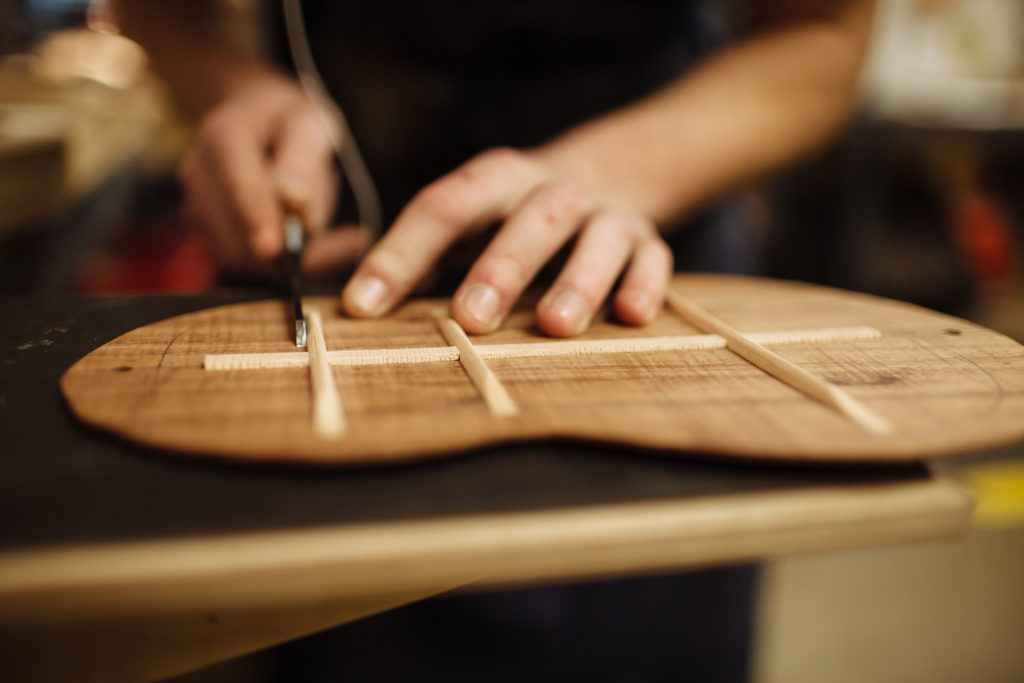
Although originally from the South Bay Area, Upton did what any Sonoma local would: He planted 525 pinot noir vines on a lot in West Petaluma, grabbed some warehouse space, and started to grow his business. He now sells nearly 40,000 instruments per month, with growing client bases in Asia, Europe, Canada, Australia and New Zealand.
Yet what really excites Upton is when he discusses the custom instrument shop he’s carved into his warehouse and office space in Petaluma. What started with just a couple of tinkerers trying to improve upon their existing ukuleles, has turned into a team of expert luthiers making an array of ukulele-inspired instruments, some of which have caught fire with professional musicians.
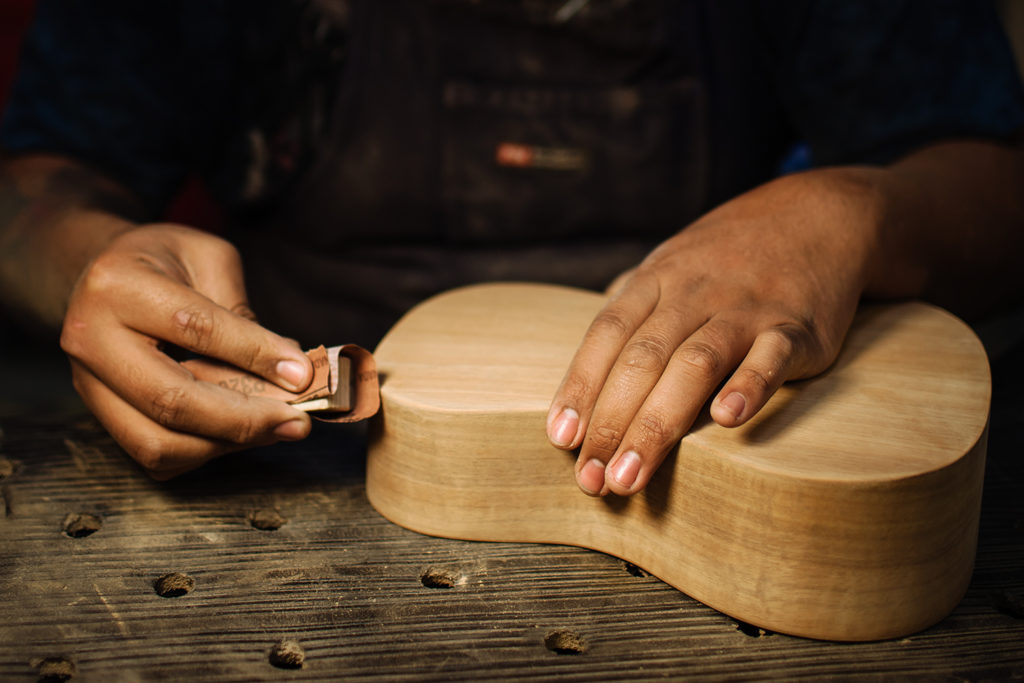
From koa (a rare Hawaiian hardwood) ukuleles to the “U-Bass”—a small bass guitar that utilizes rubber strings to ilicit big sound from a small, portable instrument—guitars and something called “the resonator” (think a dobro meets ukulele), Upton is pushing the envelope here.
“Guys like Jon Anderson from [the band] Yes, Pat Simmons [Doobie Brothers] and Hutch Hutchinson [Bonnie Raitt] have really latched onto our stuff,” says Upton. “They found them, took them onto the road, and everyone who sees and hears it seems to want one. It’s be great for us.” Upton adds that players who tour with Eric Clapton, Peter Gabriel and Paul McCartney all bring Kala instruments on the road.
One big supporter is Bakitha Kumalo, who tours with Paul Simon regularly, and plays mostly on a Kala U-bass.
“I played a Washburn fretless bass on the Graceland album and I loved the sound, so I was looking for something like it. I was experimenting a lot, looking for an original sound. Everyone mimics each other these days, but I wanted a unique sound,” Kumalo says. “When I first saw it, I thought ‘It’s small, maybe I’ll give it to my kids.’ But the tone and comfort is so amazing. It leads you into the instrument. It envelops you—and I just fell in love with it.”
In addition to experimenting with various woods (which produce different tonalities while playing), Upton is constantly looking to tweak existing instruments in order to come up with something new.
He also is a big proponent of education kids through music; Kala and Upton have donated thousands of ukuleles to elementary through high schools to help boost the music programming so integral for the youth.
“Selfishly, we’re sort of building in a customer base,” Upton admits. “But anywhere we can help bolster creative school programs, we’re eager to provide.
Check out KalaBrand.com for more information.
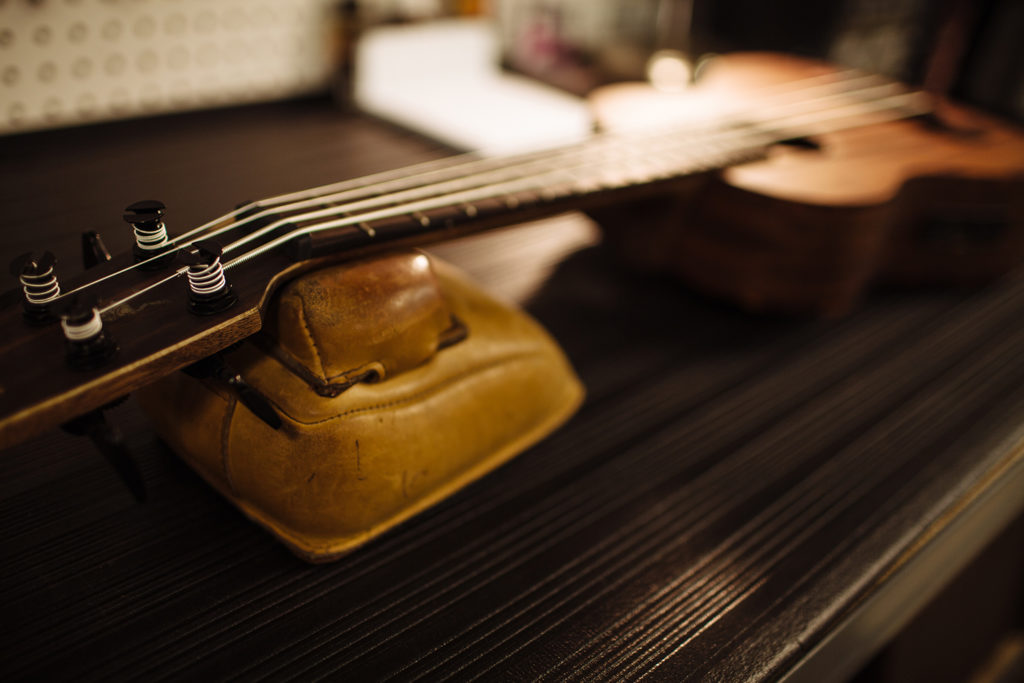
Michael, Natalia & Susan Sarandon
Watch Michael Garlington and Natalia Bertotti work on creating a dress for Susan Sarandon out of mostly found material and paper.
Garlington and Bertotti’s show, The Portals of Wonder, is centered around evocative black-and-white photographs presented in lavish three-dimensional frames. Many of the decorative elements and textures are extracted from the duo’s own photos, printed on cardboard or just paper. Almost all the rest comes from Recycle Town, the recycling dump near their Petaluma, California studio. In this show, one photo is framed in broken china, layered and fractured like remnants of the Mad Hatter’s tea party. Another, an alluring image representing Frida Kahlo, is framed in upholstery trimmings: velvety, silky cords that invite you to stroke them.
Hot Handed
One day, not so long ago, they ran out of corrugated cardboard hot beverage sleeves at Petaluma Coffee and Tea. Patrons were complaining of not being able to enjoy their warm beverages without a sleeve. Although definitely a first-world problem, it was a problem nonetheless, until a crafty barista and longtime employee, star came to the rescue. From some sheets of newspaper, she cleverly fashioned a hot beverage sleeve for a favorite regular, and then everybody wanted one. Star obliged and made them for every order that day. Today she continues to grace the cafe with her handmade recycled and functional art pieces.
And this is something we do suggest you try at home.
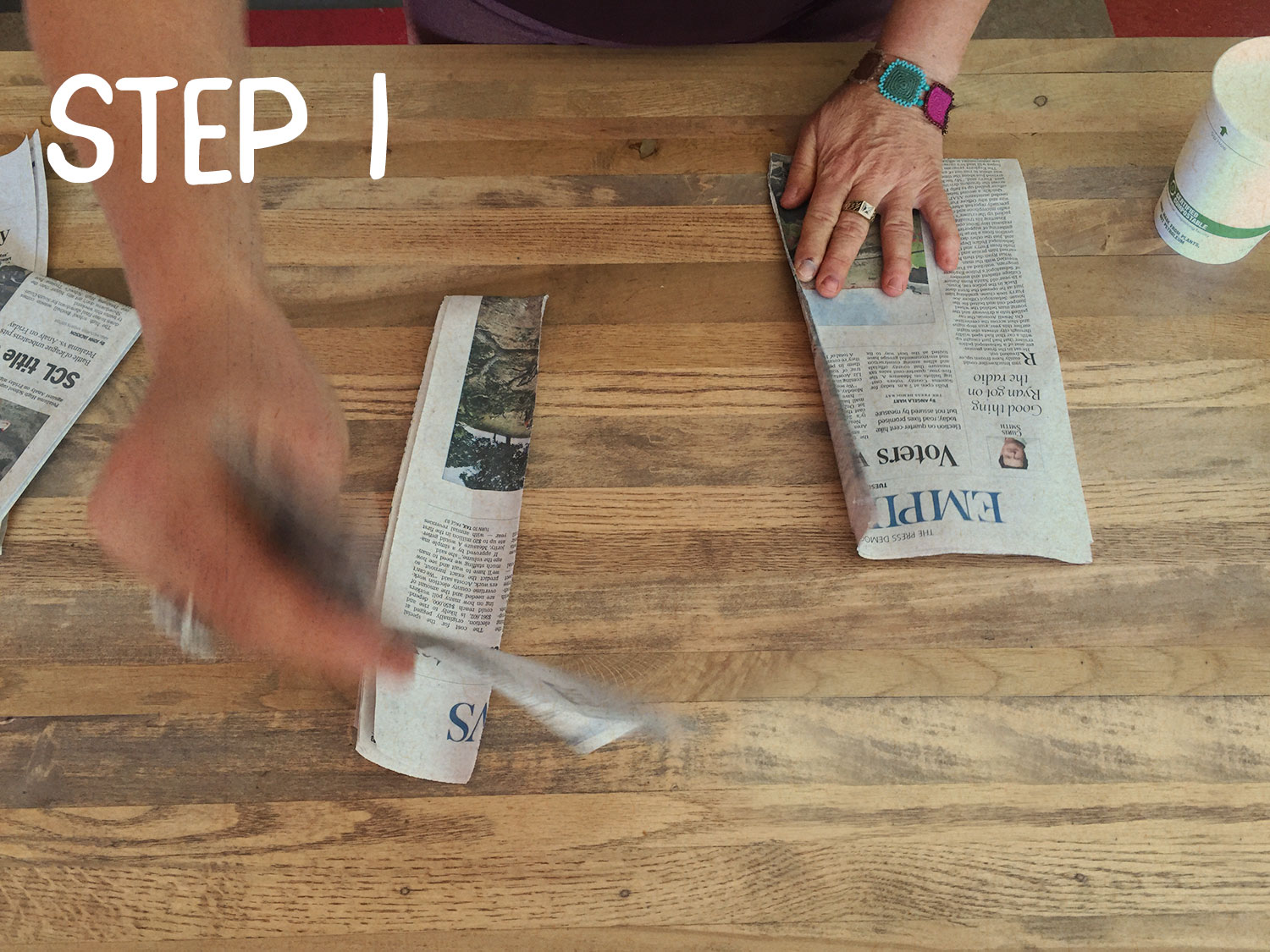
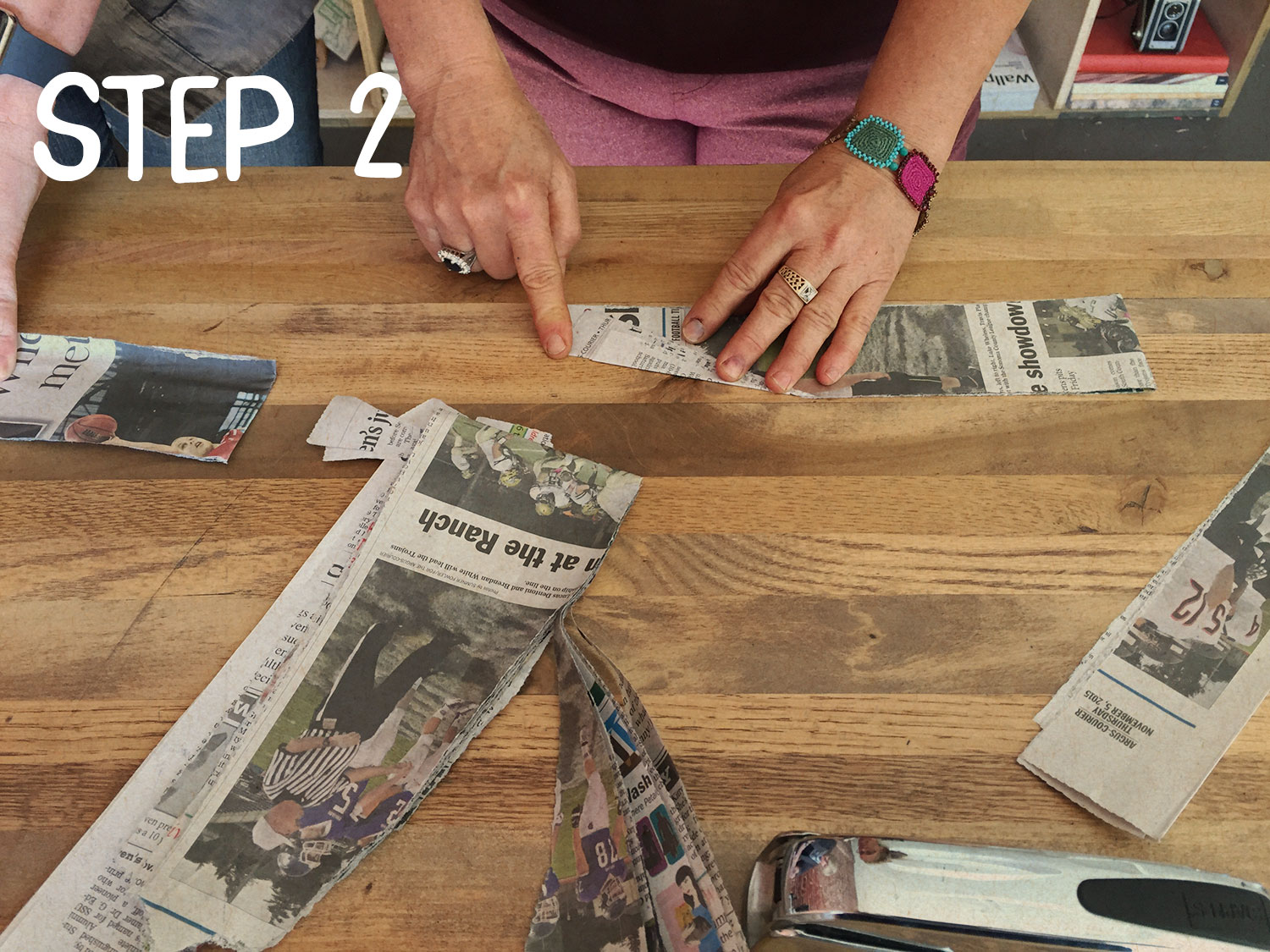

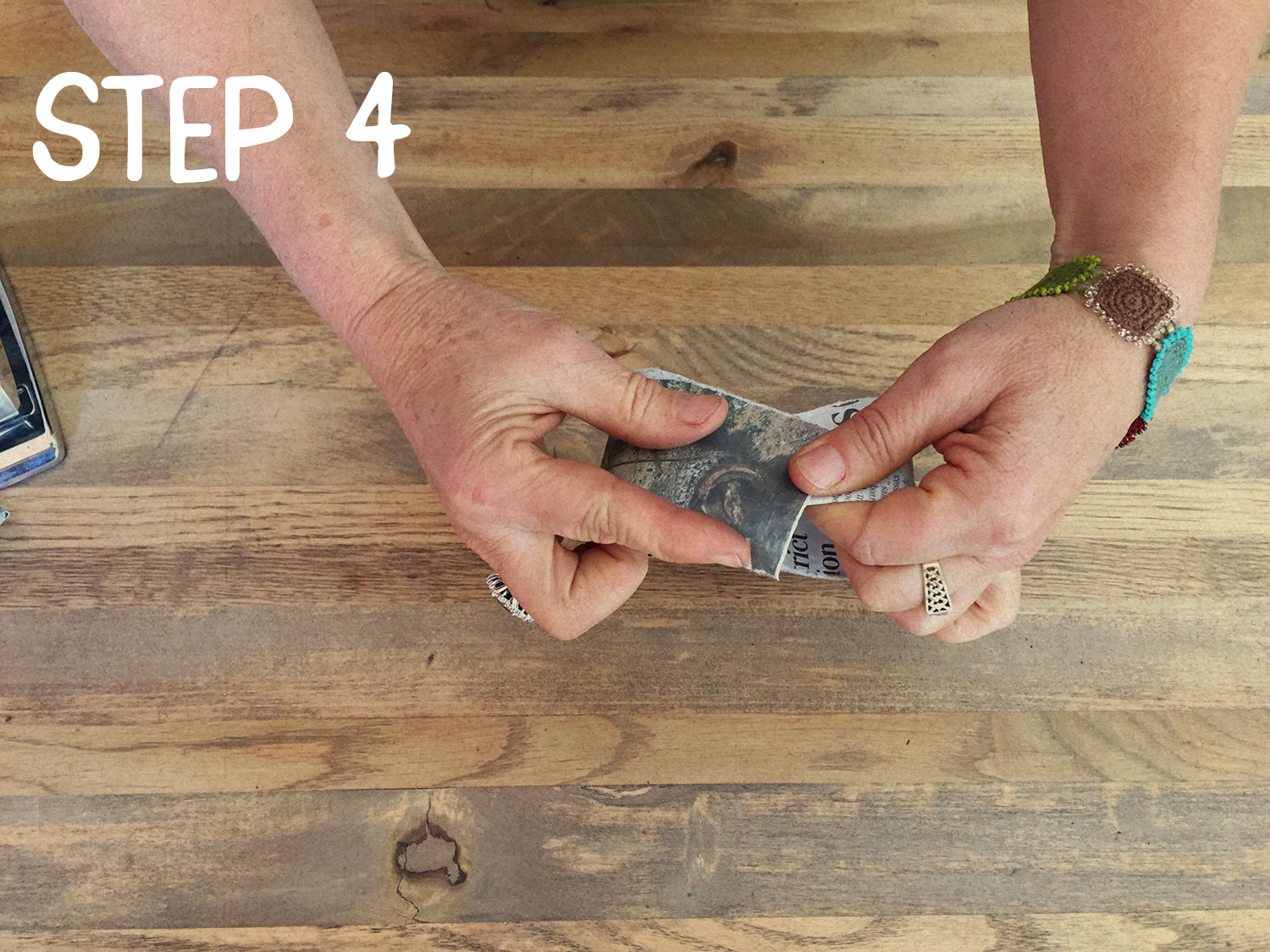
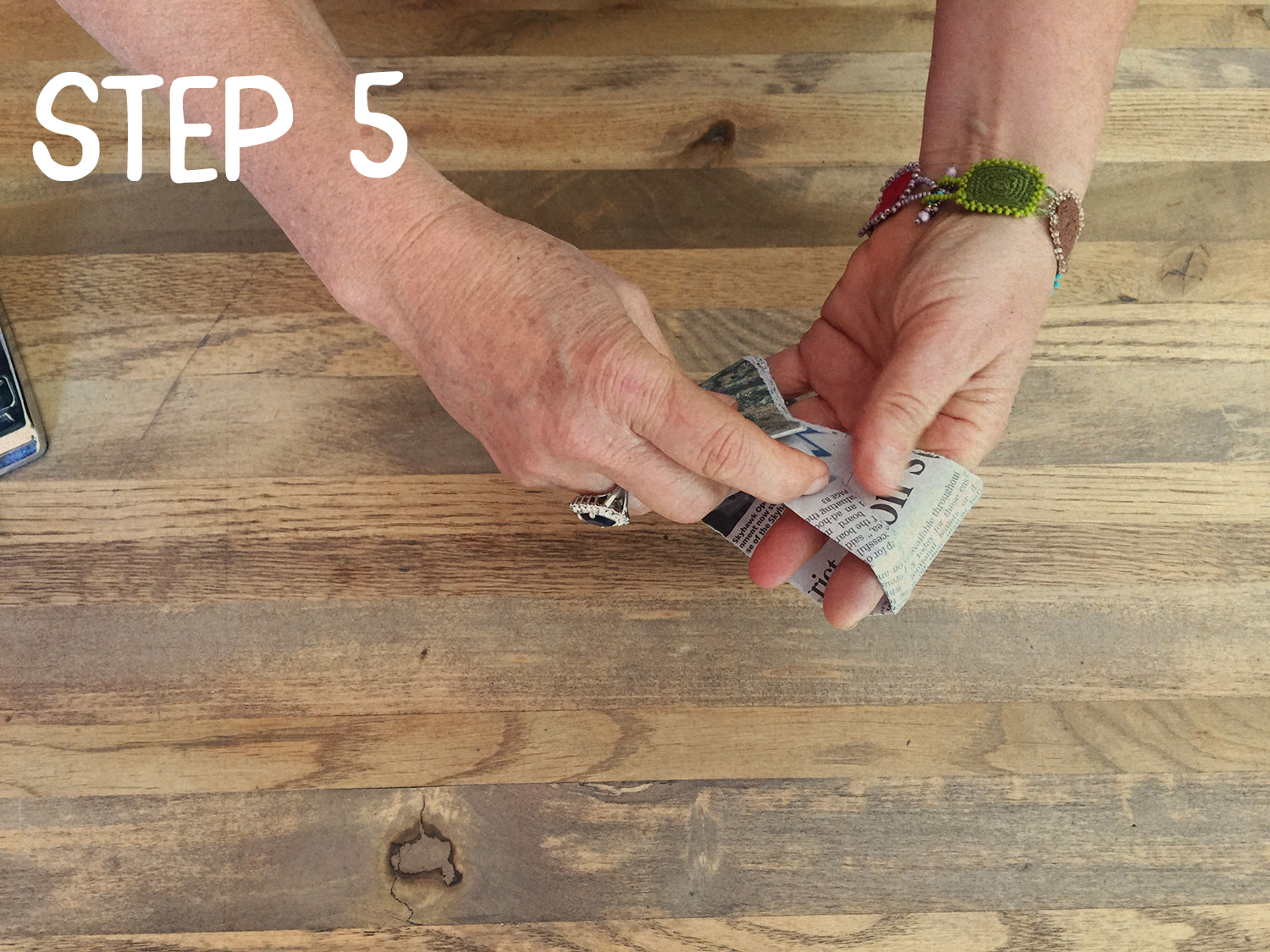



Master Bike Crafter
If you want to get on Bruce Gordon’s bad side, ask him why his bikes cost what they do. That is how to get off on the wrong foot with this purist bike maker who has been crafting his custom made bicycles in Petaluma for almost 30 years. And you don’t want to be on his bad side because then you would be robbed of the opportunity to visit his shop and upstairs gallery of work that is like a mini Bruce Gordon museum of bicycle beauty. Bruce bristles at the word “art” when used to describe his bikes, and much prefers “craft.” But whatever the term, they are nothing short of beautiful and well worth a visit.
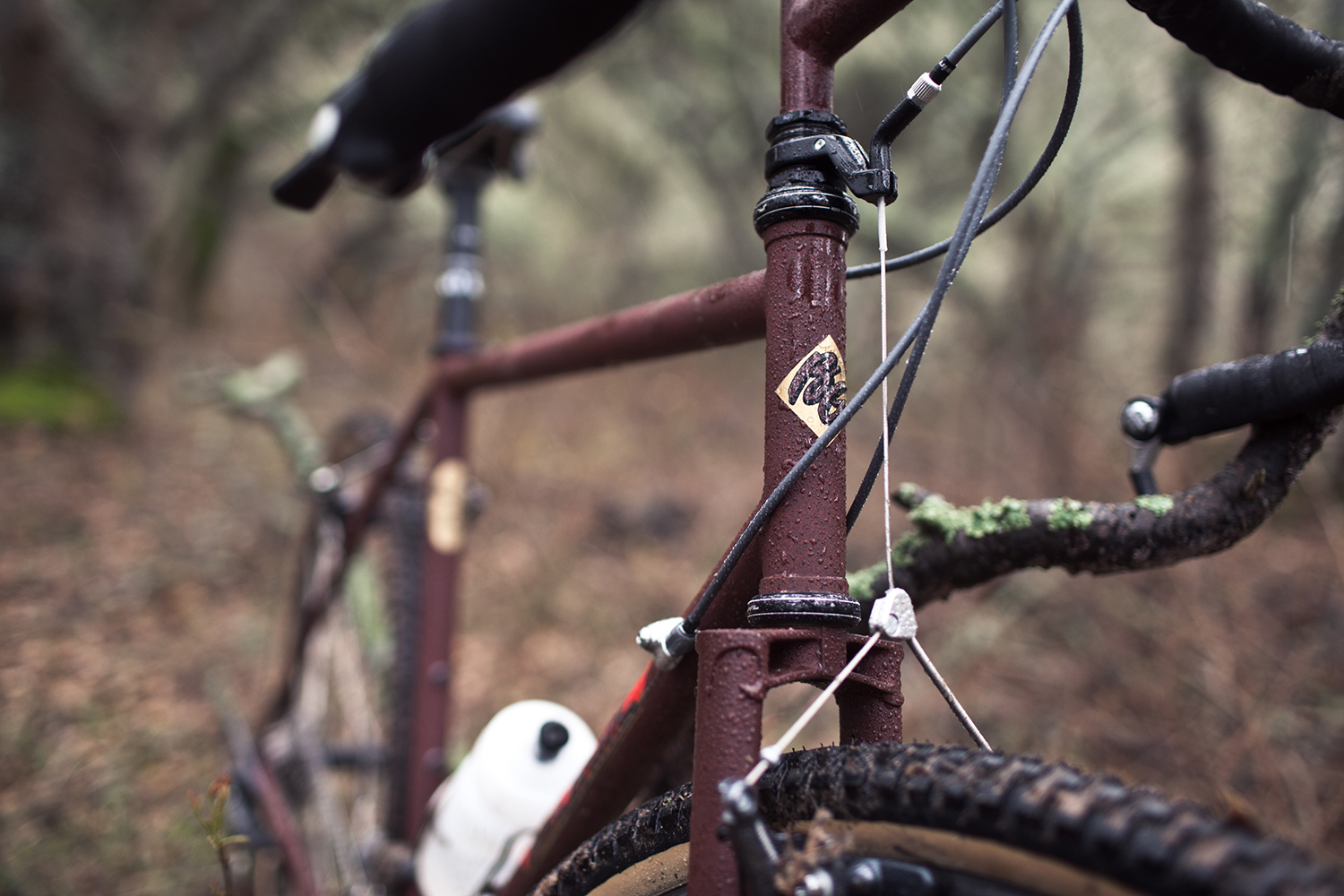
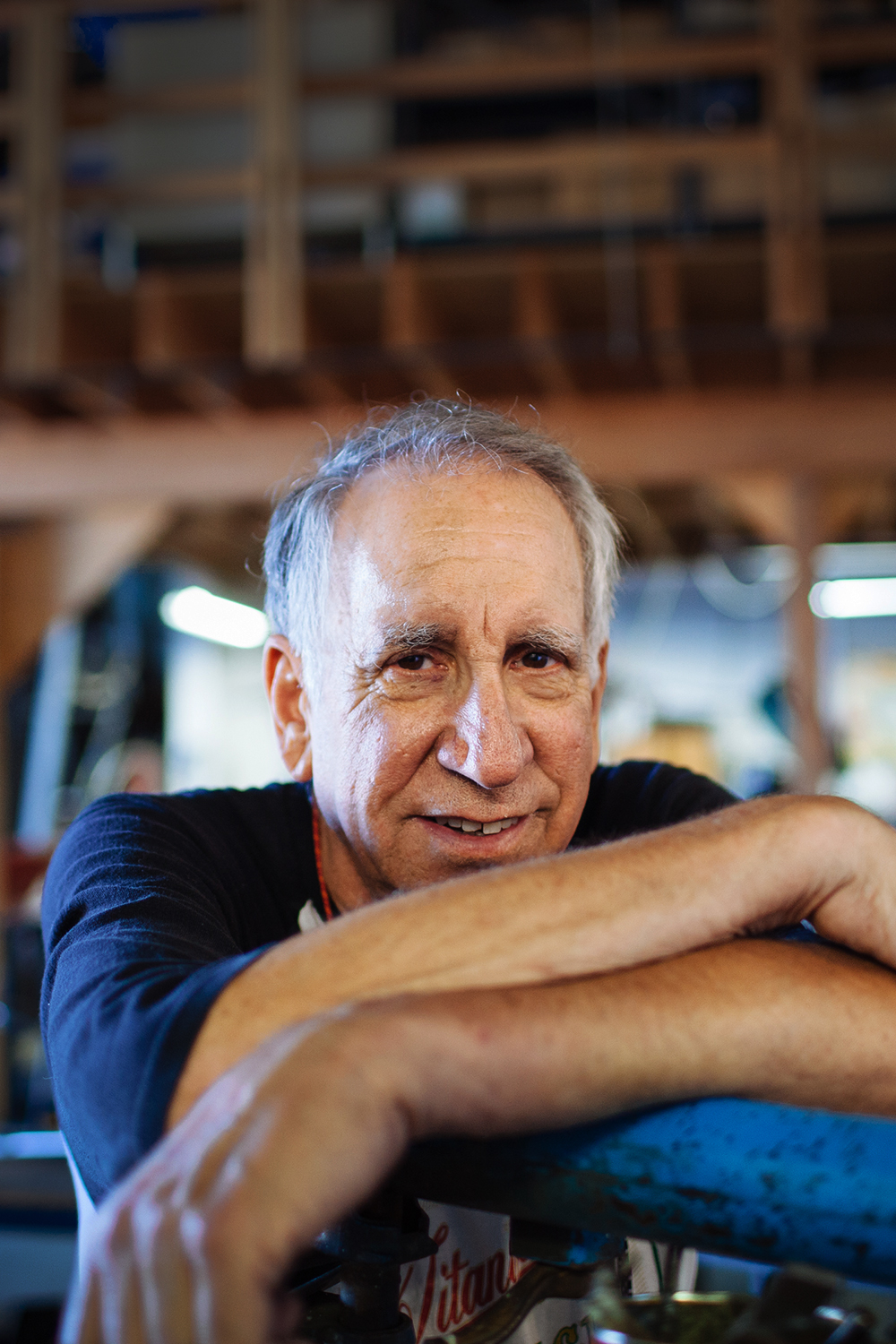
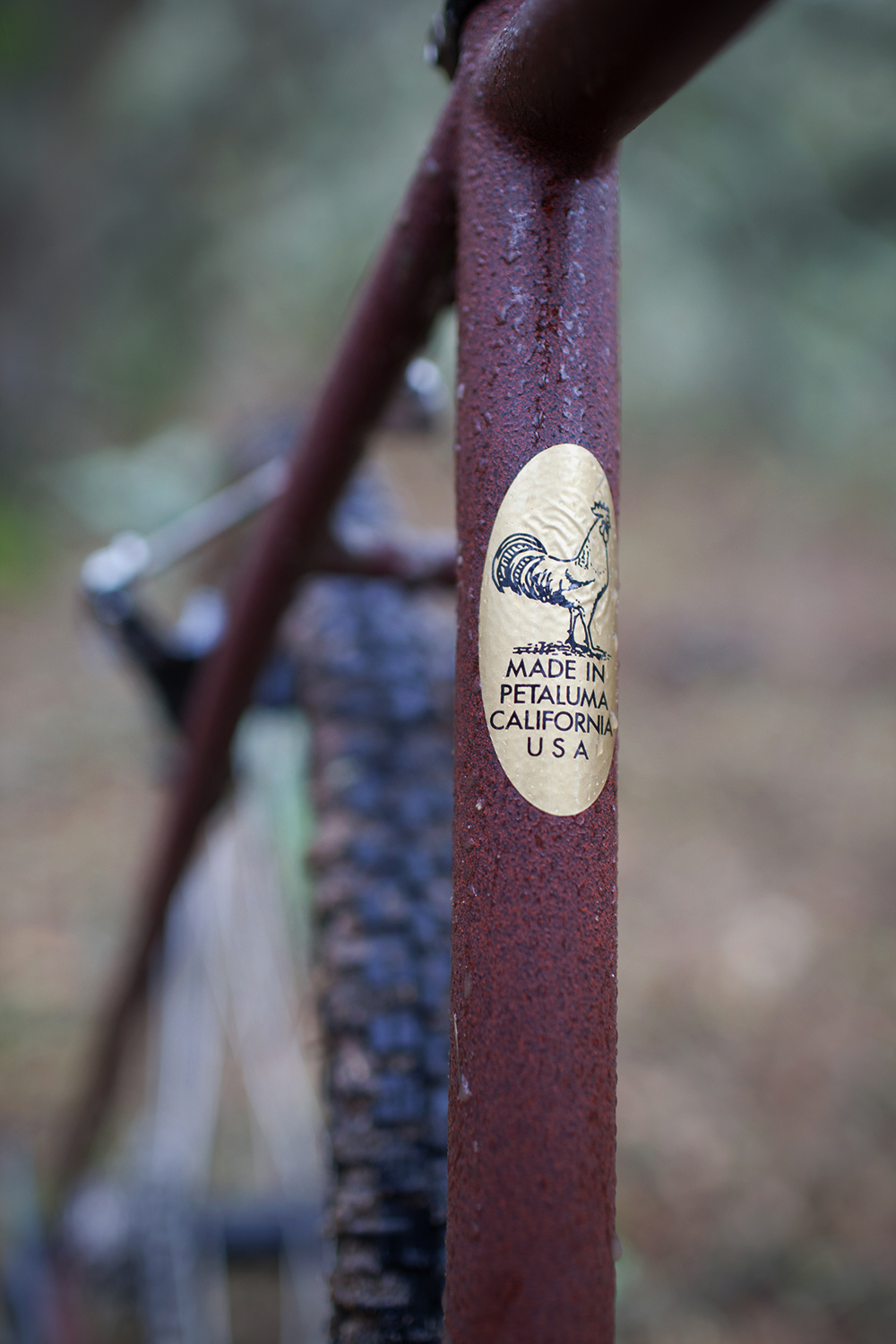
Bruce is a craftsman of the purest sort, sourcing his materials very carefully from the USA as much as is possible in the bike part world. The letters COO (which stand for Country of Origin) are very important to him, from making his bikes to buying blueberries in the market. It’s less about “buying American” than it is about ethical sourcing and cool hard quality. He believes strongly in quality, and anything less would be an insult to his craft.
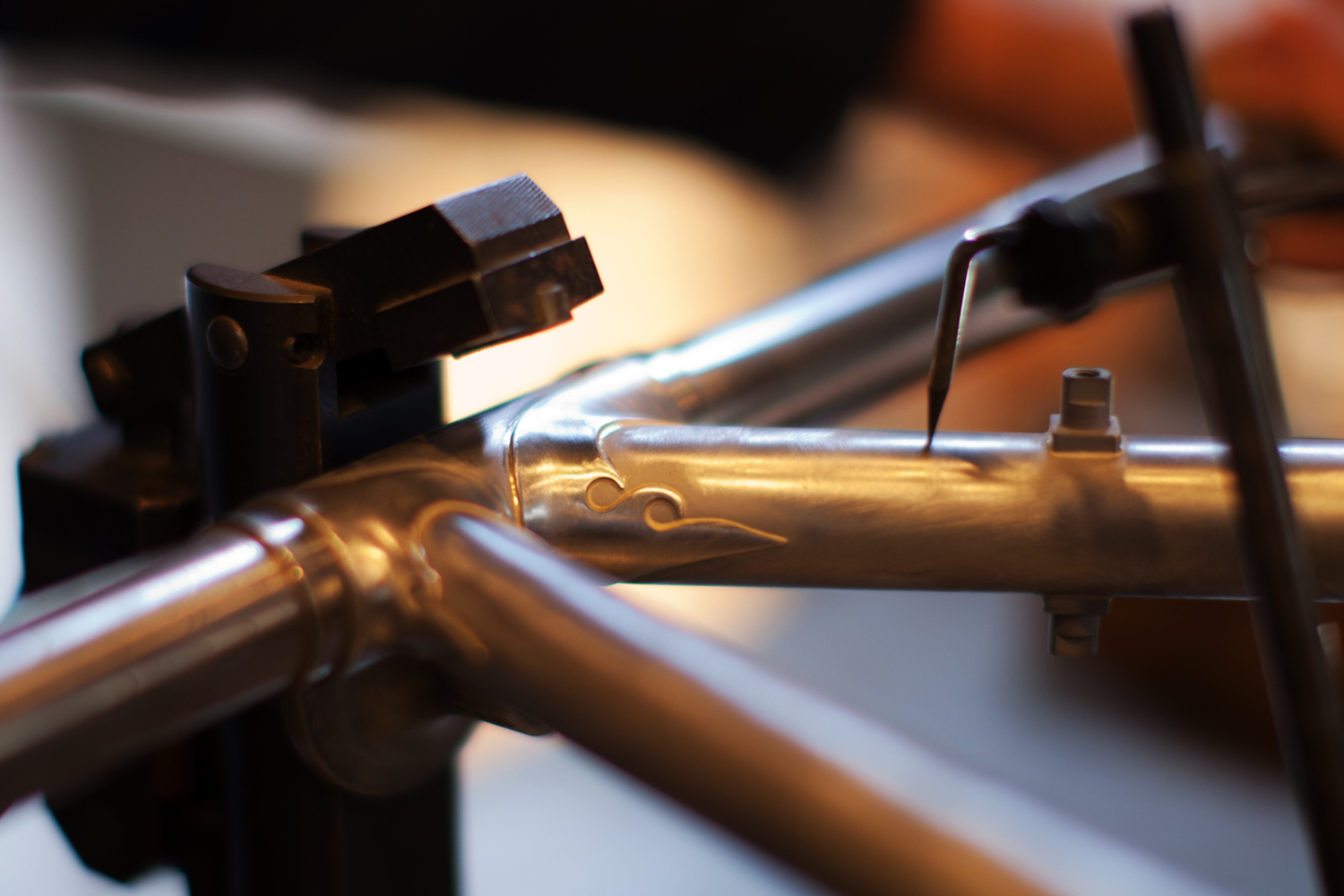


He makes 8 sizes of his bikes, or he will make you a custom one. He sources his materials in the USA, chosen carefully for quality, not price, and puts it all together – welding, brazing, fabricating and painting – at his shop in West Petaluma.
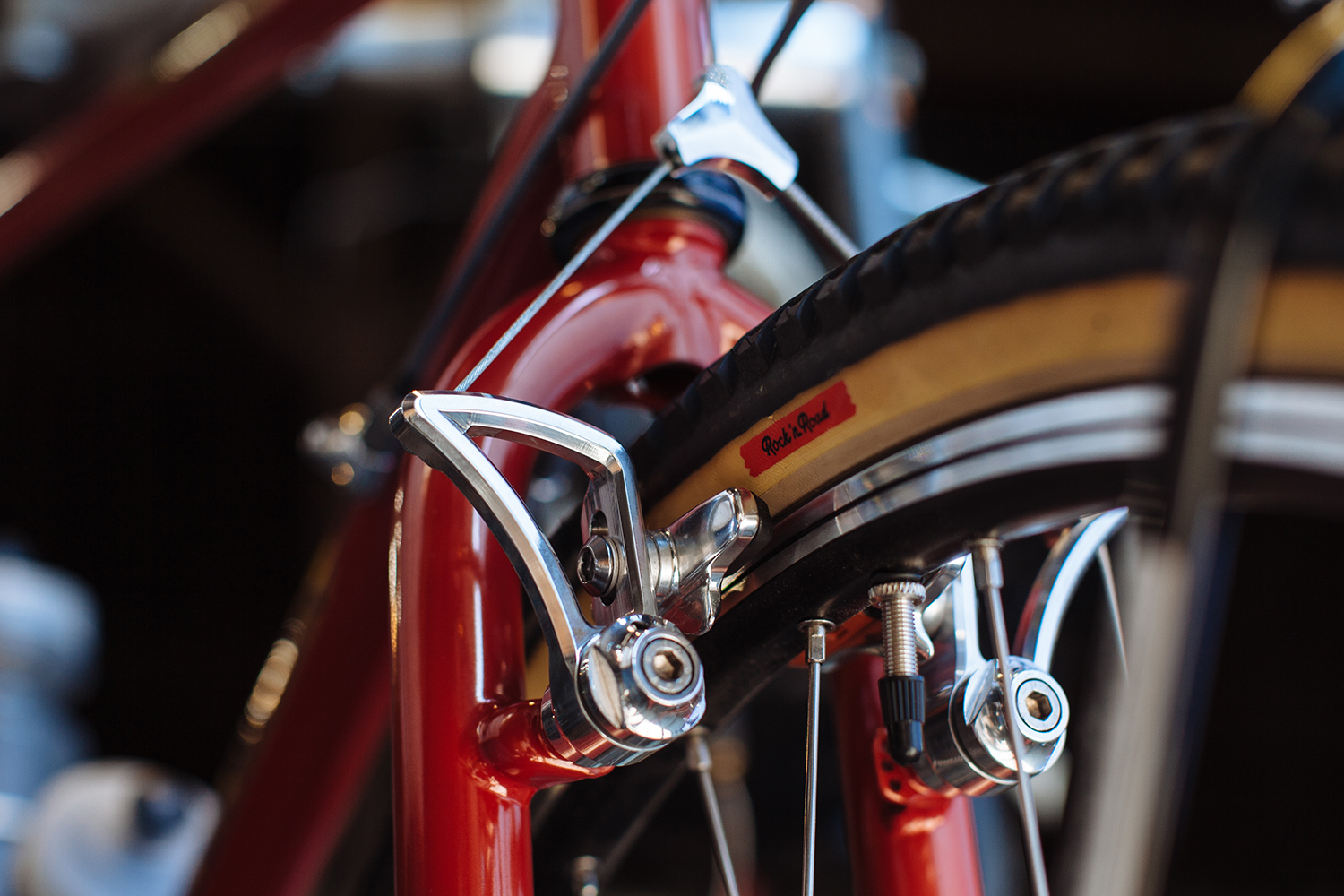

My favorite piece of machinery in his shop is a horizontal milling machine salvaged from a WW II era ship and looks like something out of Fritz Lang’s Metropolis. He has a newer one but it is broken and prohibitively expensive to fix. The older, more manual machine suits his needs just fine and serves to create lovely cuts of metal that adorn his bikes.
Bruce holds onto the original drawings of every bike he ever made. They are archived at his shop. So if you purchase a bike from a previous owner and want to know about its genesis, Bruce will look it up for you for a fee.
As a result of Bruce’s sourcing practices and in-house craftsmanship, a Bruce Gordon bike is the most American-made bike one can get (nota bene: there are no American manufacturers of tubing), and so it’s pretty cool this is happening in Sonoma County.
Bruce has plans for his shop and these include expanding his retail showroom and starting a new bike repair business. The full service repair shop is now open for business, and in Petaluma he is one of only two such operations for those seeking bicycle repair and refurbishing. Services include tune ups, customs wheel builds, suspension services and overhauls and complete refurbishing. Mirroring the passion for quality and service that Bruce infuses with every bike he creates, the Repair Shop, run by experienced biker Tim Nicholls, treats every customer with the same level of attention to detail and workmanship.
With this expansion into more retail and full service repair, Bruce hopes for Bruce Gordon Bicycles to be a destination stop for bike enthusiasts – a place to come and talk bike shop, and maybe get a chance to talk bike shop with one of the bike world’s iconic craftsman.
Visit him here at www.bgcycles.com, or better yet go visit him in person.
Built to Last, circa 1920
One word: Chickens. So, if you were a chicken rancher, made wealthy by selling your wares down the Petaluma River to San Francisco and beyond, and you wanted to build a new house to suit your family’s status, first, you hired an architect. And not just any architect…a sophisticated and highly skilled architect that you could trust to design the stateliness you sought. In Petaluma, this meant Brainerd Jones, or for a few lucky properties (5 in all) Julia Morgan.
In Katherine Reinhart’s book “Petaluma: a History in Architecture” it is suggested that an incredible 80 percent of the buildings in the city’s historic west side core have been designed by Jones-although many have been lost to redevelopment.
Brainerd Jones

Typical Jones details of the 1905-1920 period, seen in dozens of houses throughout town, include roofs that flare out at the end like Chinese pagodas, giving even his most Eastern of Colonials a curious Asian flavor. Dormer roofs often flare as well, and he loved paired dormers and heavy window boxes.
Other Jonesian motifs include X-shaped window patterns found in porch and dormer windows, three-dimensional pyramidal beam ends in fireplaces and cabinets, bands of windows a la Frank Lloyd Wright prairie style and small windows sandwiching larger windows. These motifs are prolific throughout buildings of the period, whether they were actually designed by Jones or by a copycat.
His brick houses of the 1920s, several of which line stately, tree-lined D Street are wonderful compositions of arches, turrets, arcades and gables. One of Jones’ notable houses boasts a crenellated corner-oriented entryway, and windows that vertically span the two-story living room complete with a Juliet balcony and elegantly ample brick fireplace.
Jones designed many commercial buildings as well including the Carnegie Library, the Silk Mill and the Opera House building in the heart of Petaluma’s downtown.
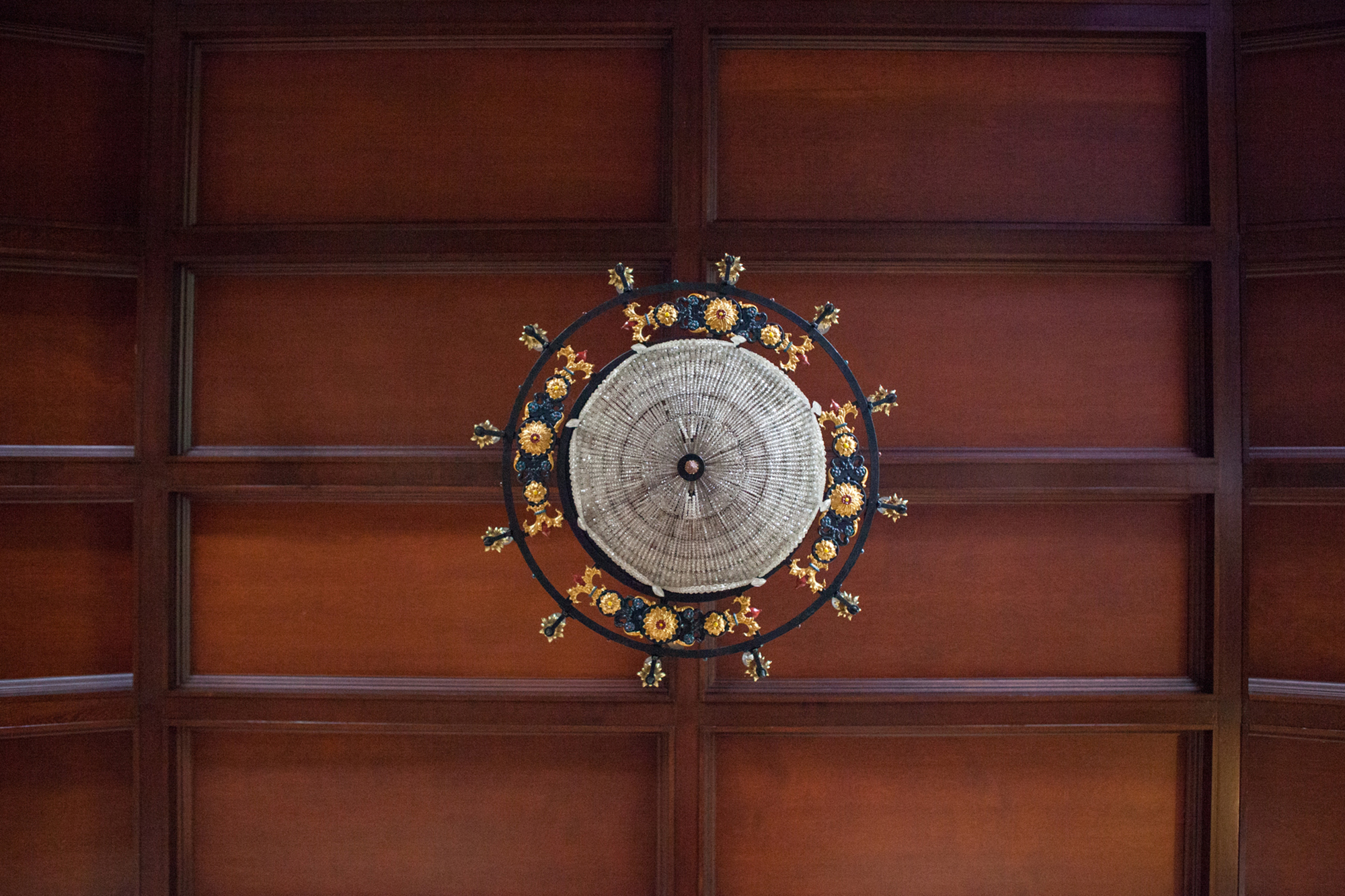
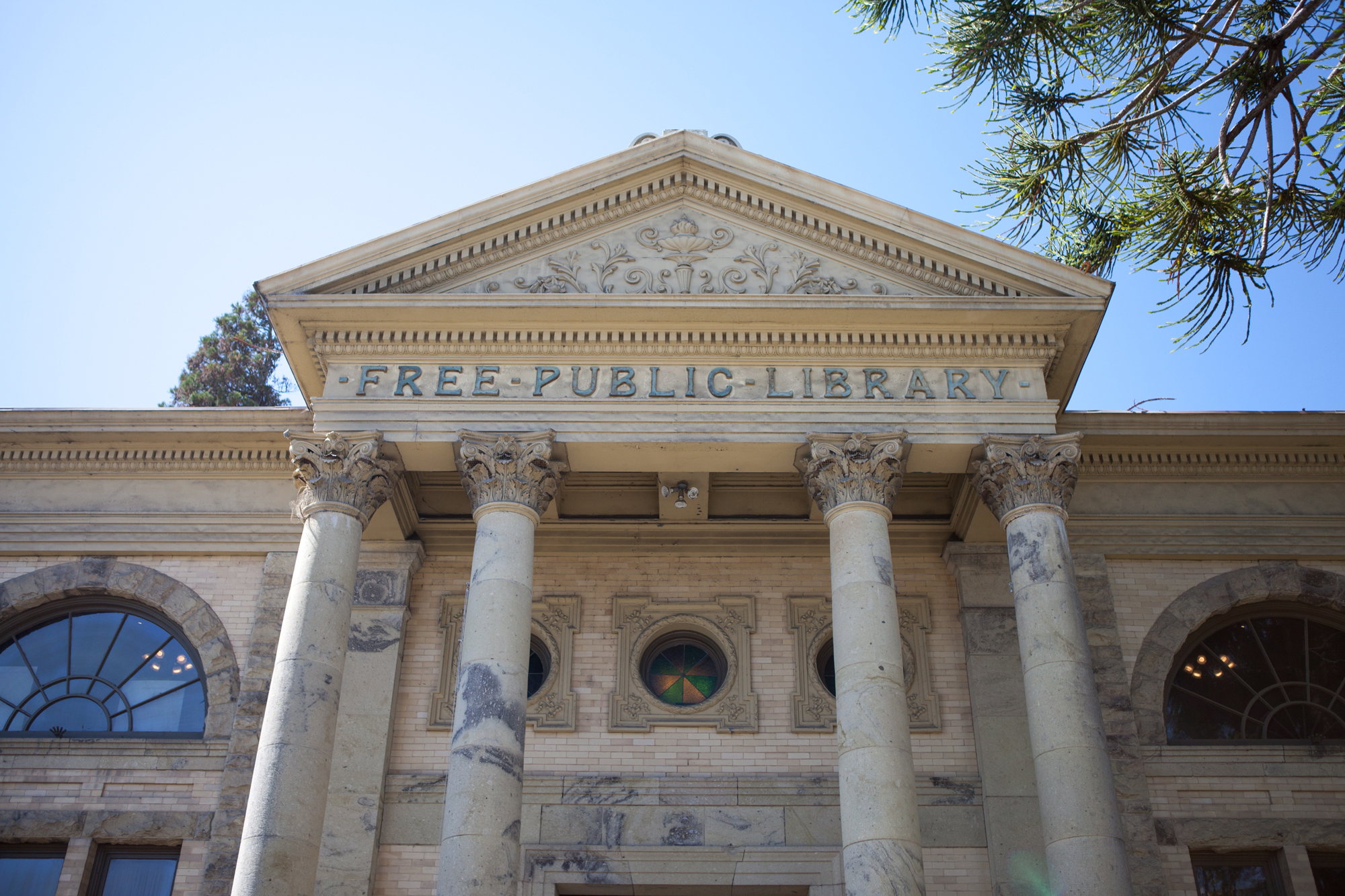



Julia Morgan

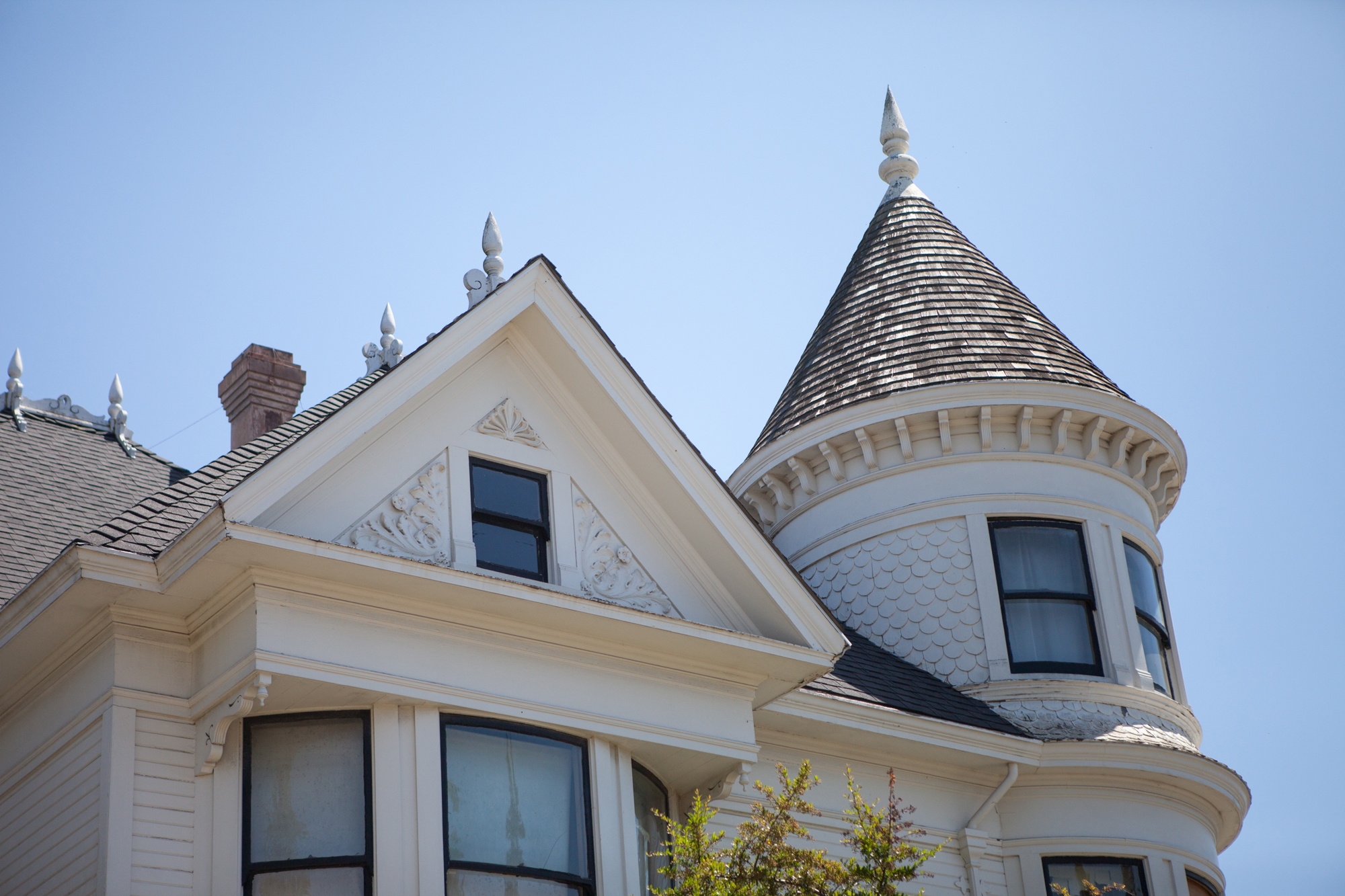
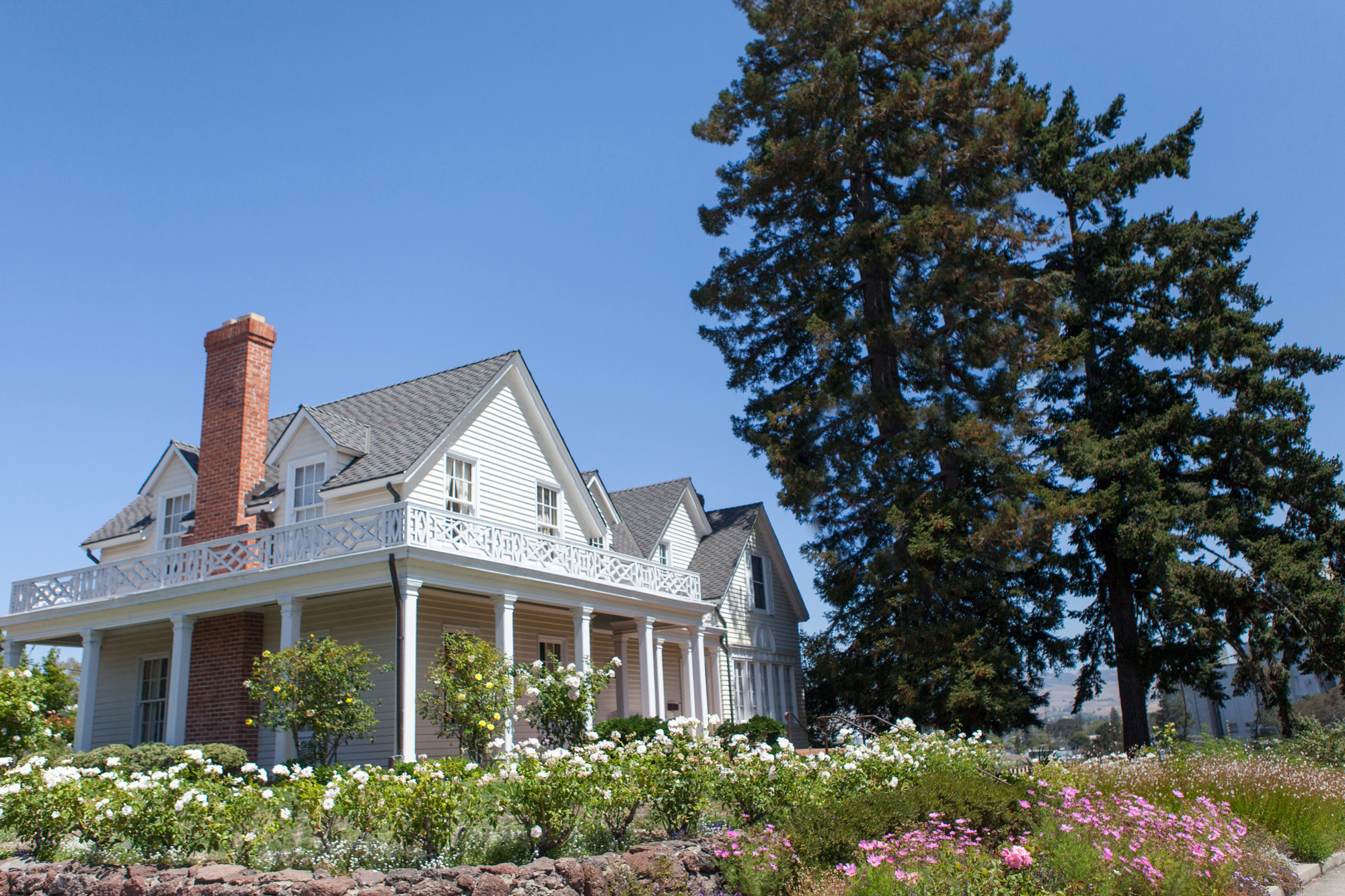
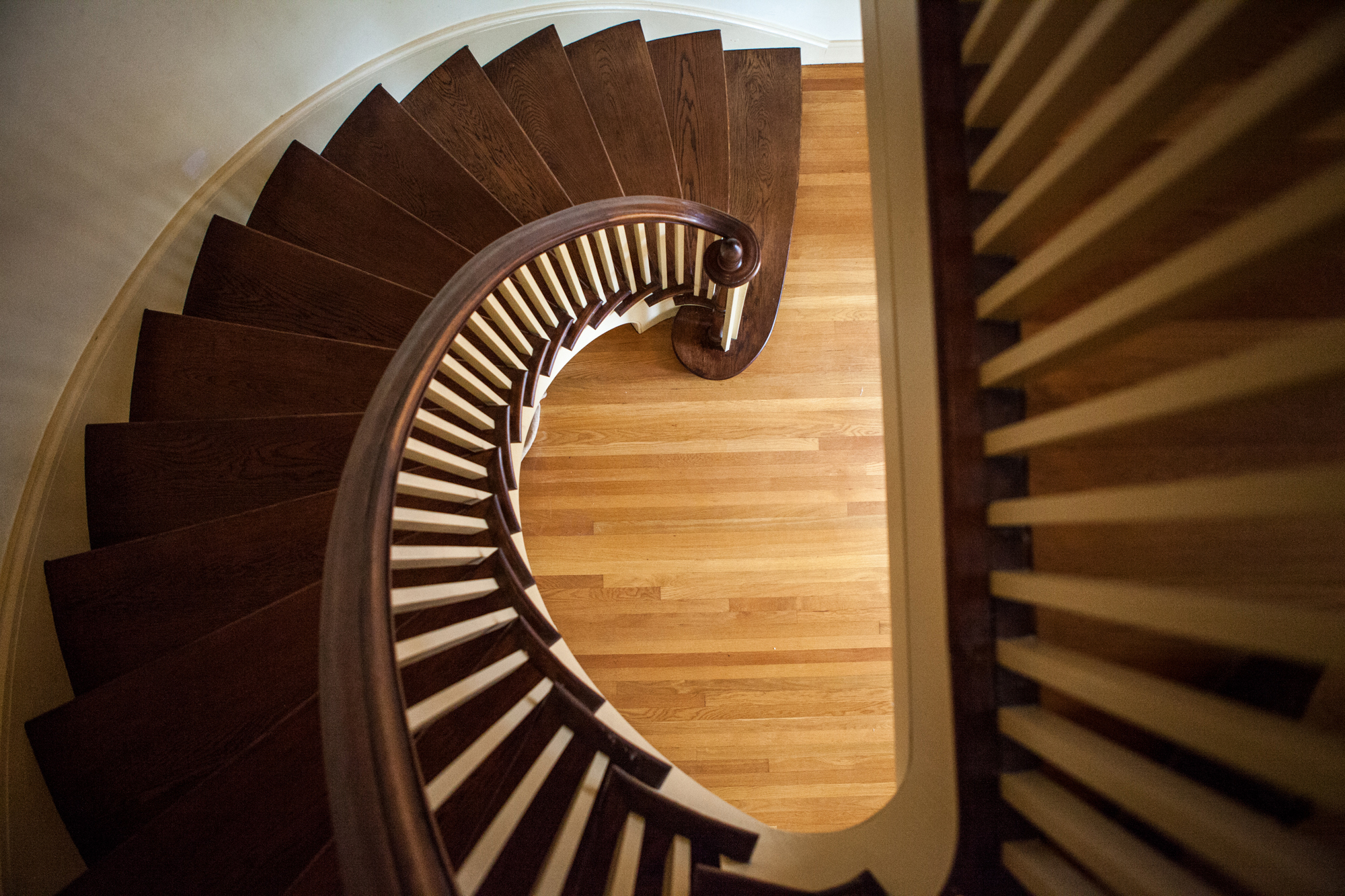
We are lucky to have such works of art in our midst. Significant to the history of Petaluma, to the Architecture of the time and to their examples of craftsmanship at its best.
Capturing Local Flavor
Griffo Distillery
Distilling the essence of Sonoma County
Mike and Jenny Griffo, founders of Griffo Distillery, are crafting spirits in Petaluma that are impossible to make any other place. That’s because one of the key ingredients doesn’t come from a supply company or farm — it floats into the distillery with the breeze.



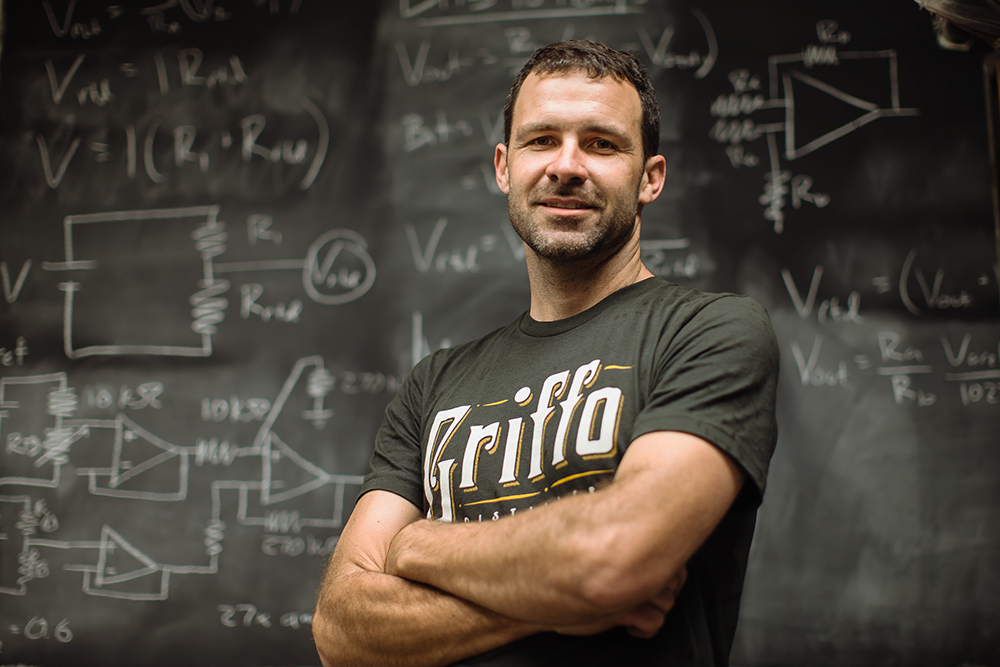
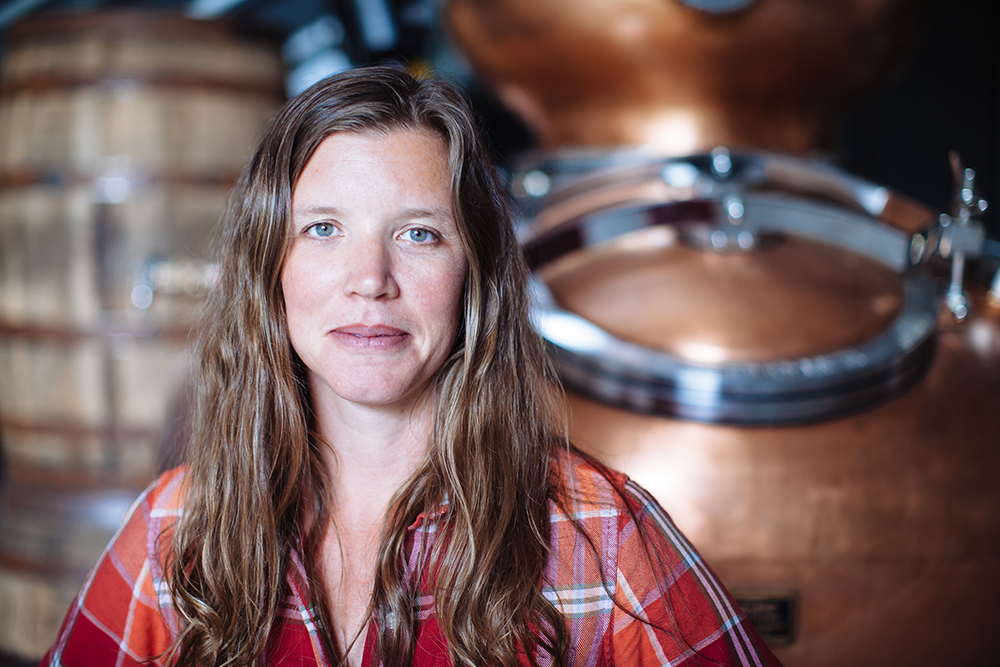
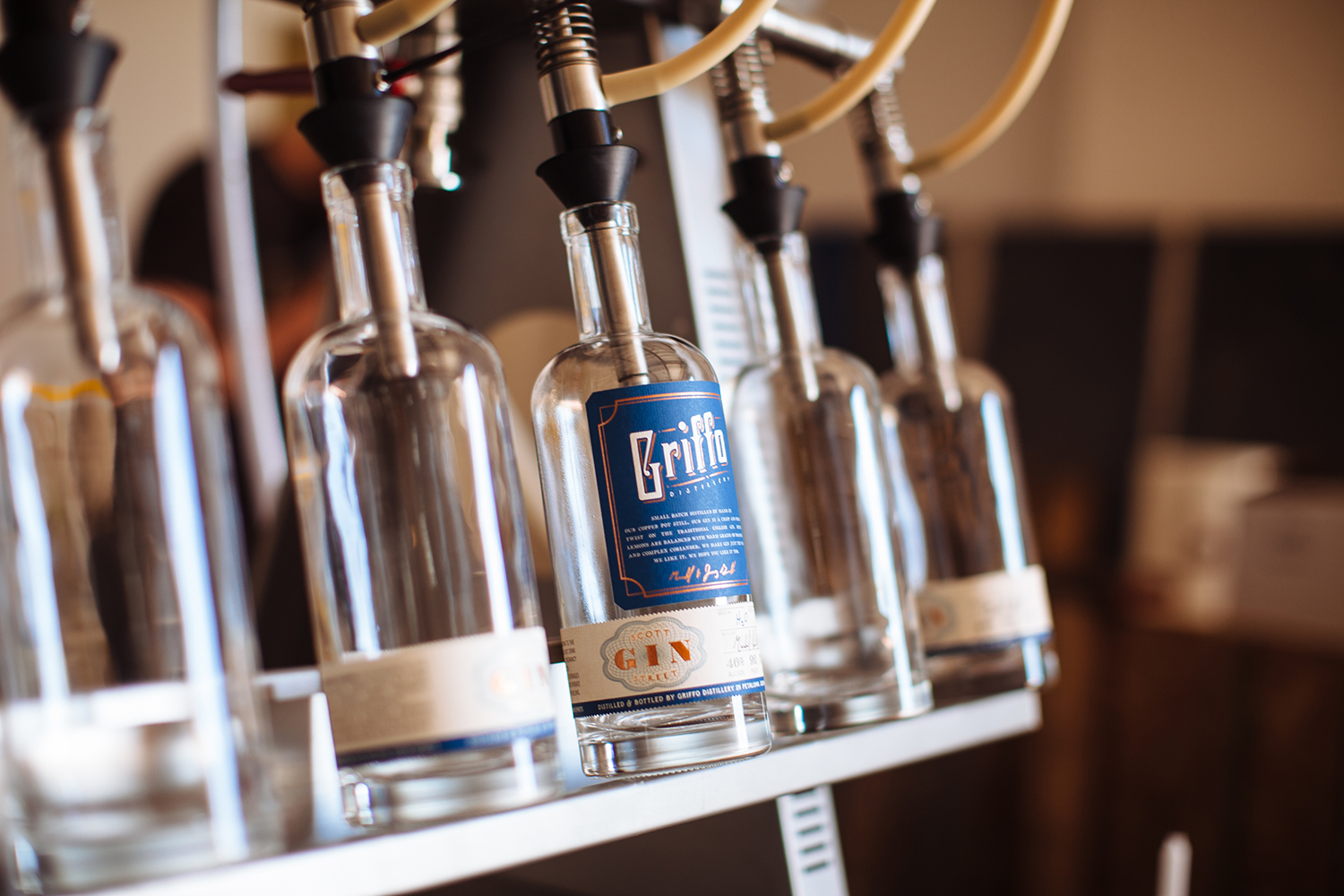
Yeast is a key ingredient in any batch of whiskey. These little single-celled organisms feed on the sugars in the grain mash to make alcohol. Most distilleries use yeast they purchased or developed in a lab.
By using what’s called open fermentation, Griffo is capturing the area’s essence as part of their spirit-making process. Yeast-producing neighbors include Lagunitas Brewing Company, Petaluma Hills Brewing, Alvarado Street Bakery and Della Fattoria.
Local ingredients play a big part in connecting Griffo to the area, but relationships in the community have cemented the distillery’s commitment to Sonoma County. Griffo meets regularly with other distilleries, breweries and wineries in the area. Neighboring breweries bring over beer that’s gone wrong and team up with Griffo to try distilling it as an experiment. When the Griffos finished making their gin, other craft beverage producers volunteered to help with the first bottling.
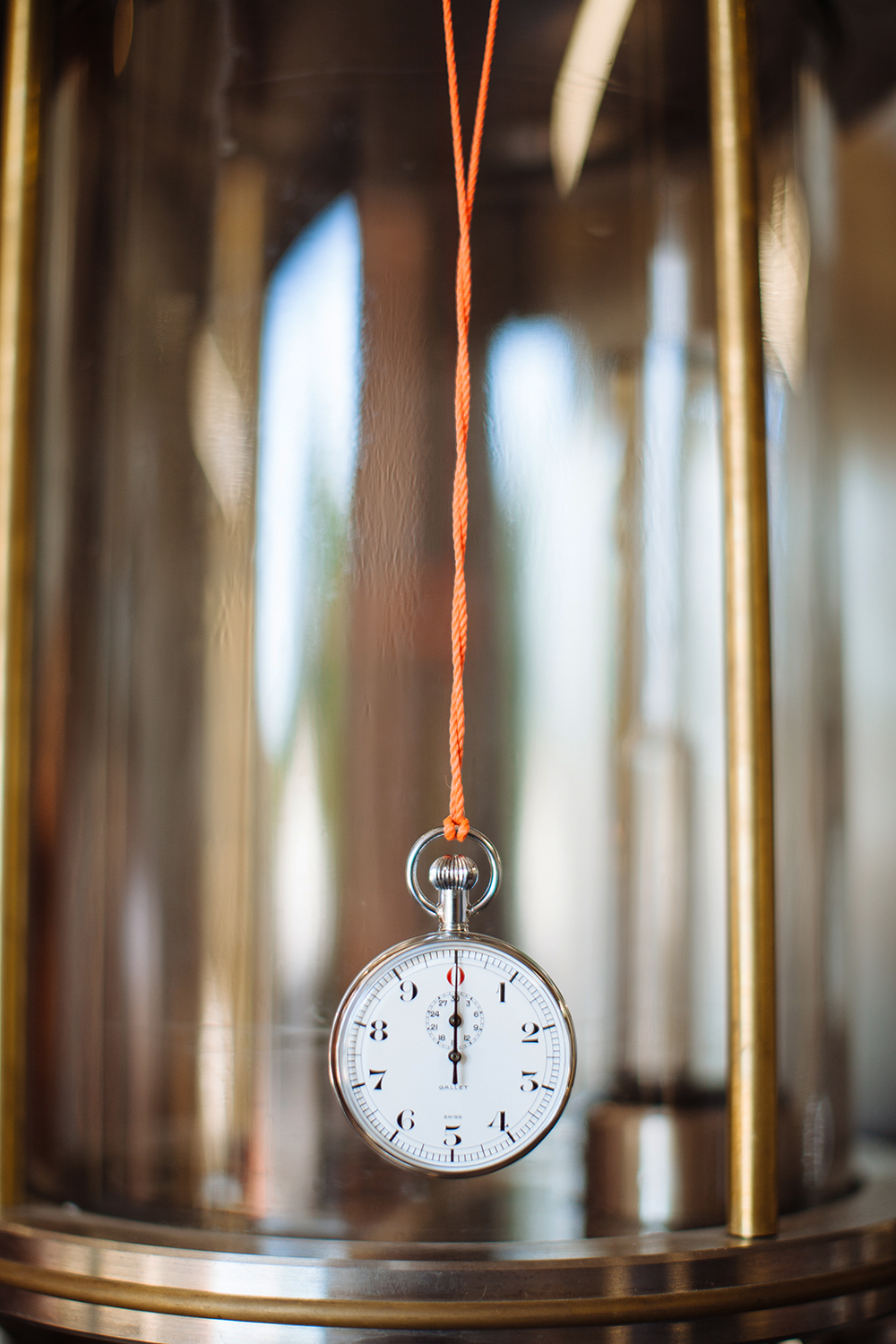
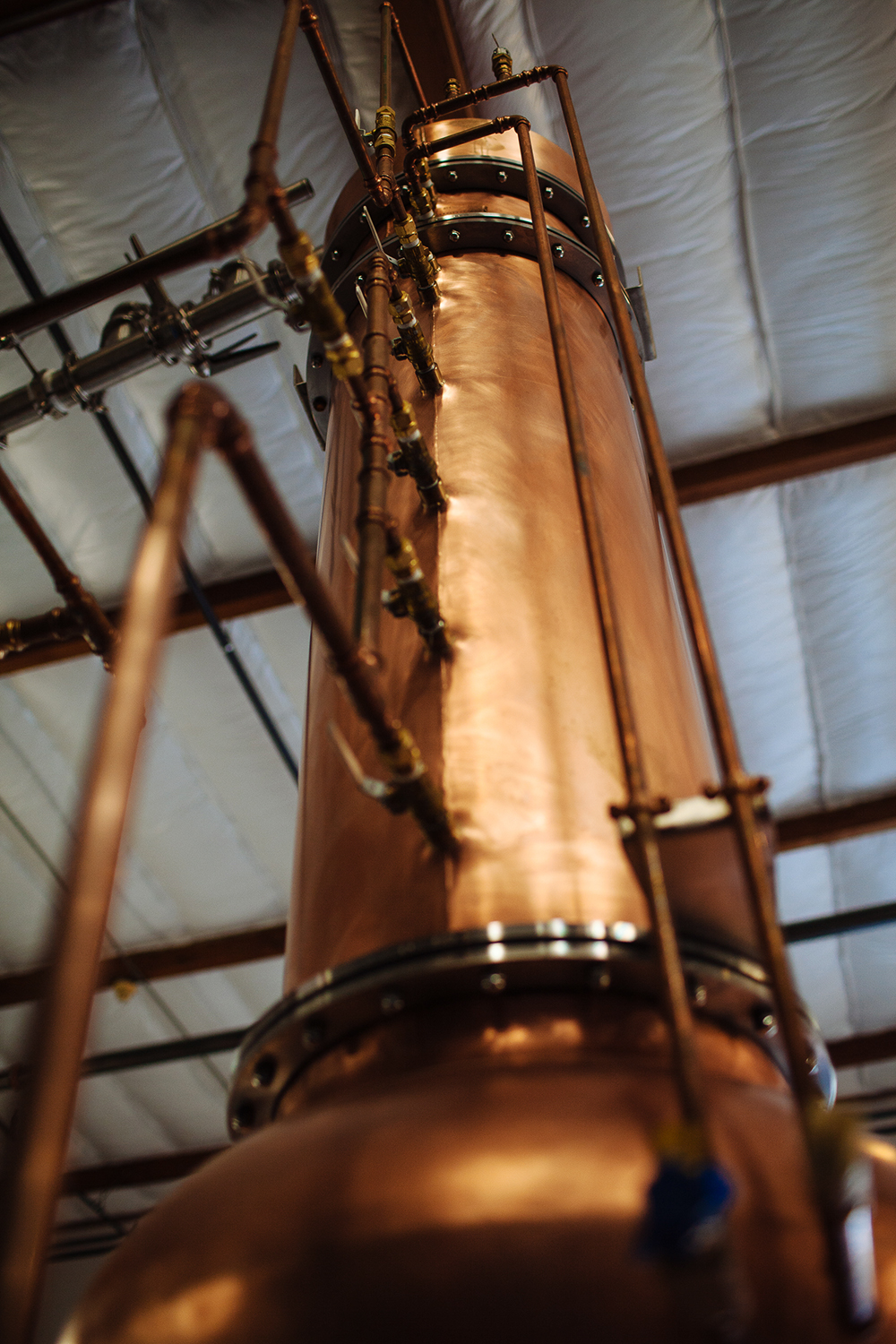
Griffo’s rye, bourbon and American whiskey still need more barrel time before they’re available. But the distillery’s Scott Street Gin is for sale at Bottle Barn, Willibee’s and Charlie’s Liquor as well as at Petaluma bars. In a couple months, you can try the gin (along with a few cocktails using it) at the Griffo tasting room and bring a few bottles home with you.
Visit their website >

